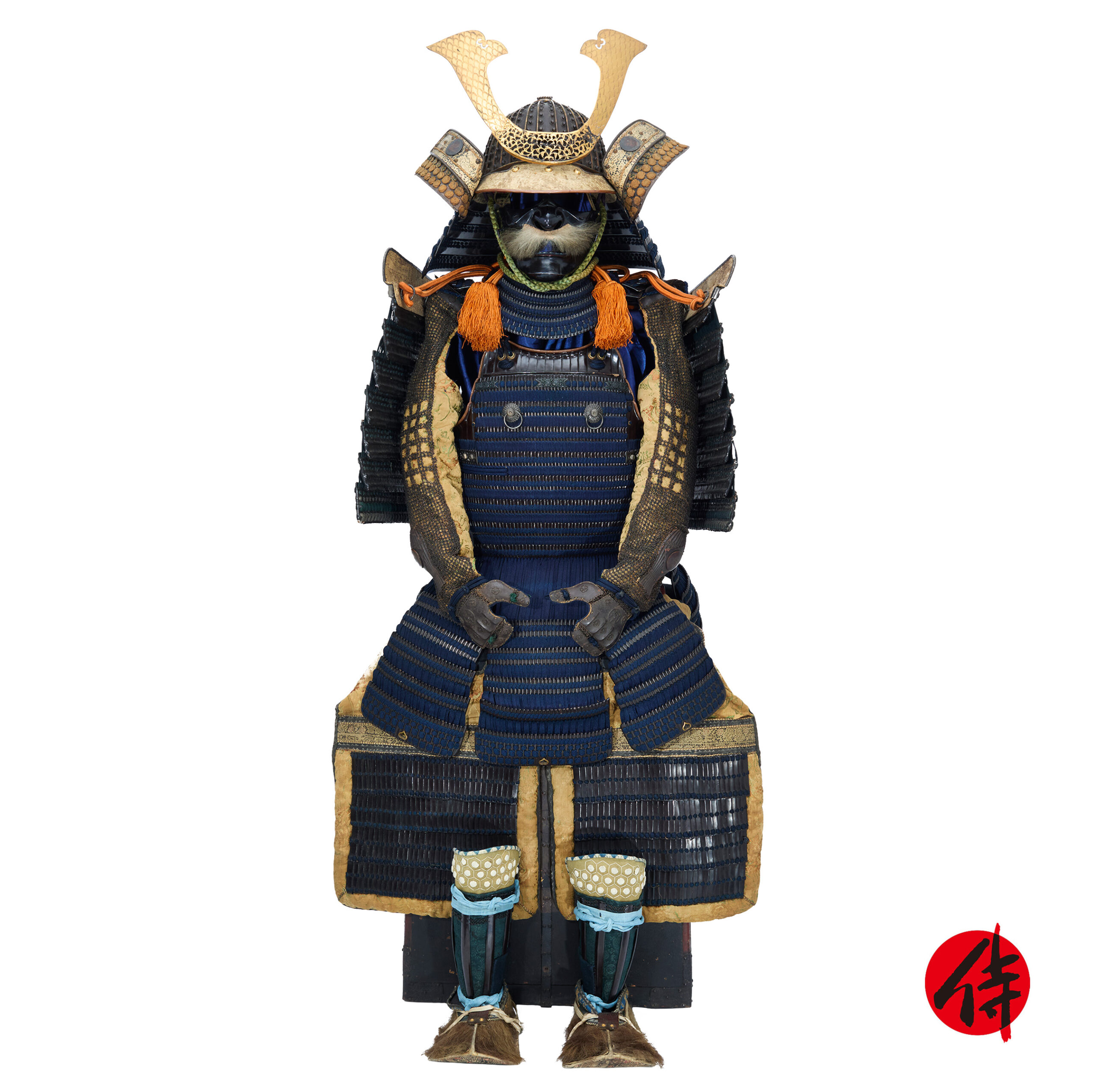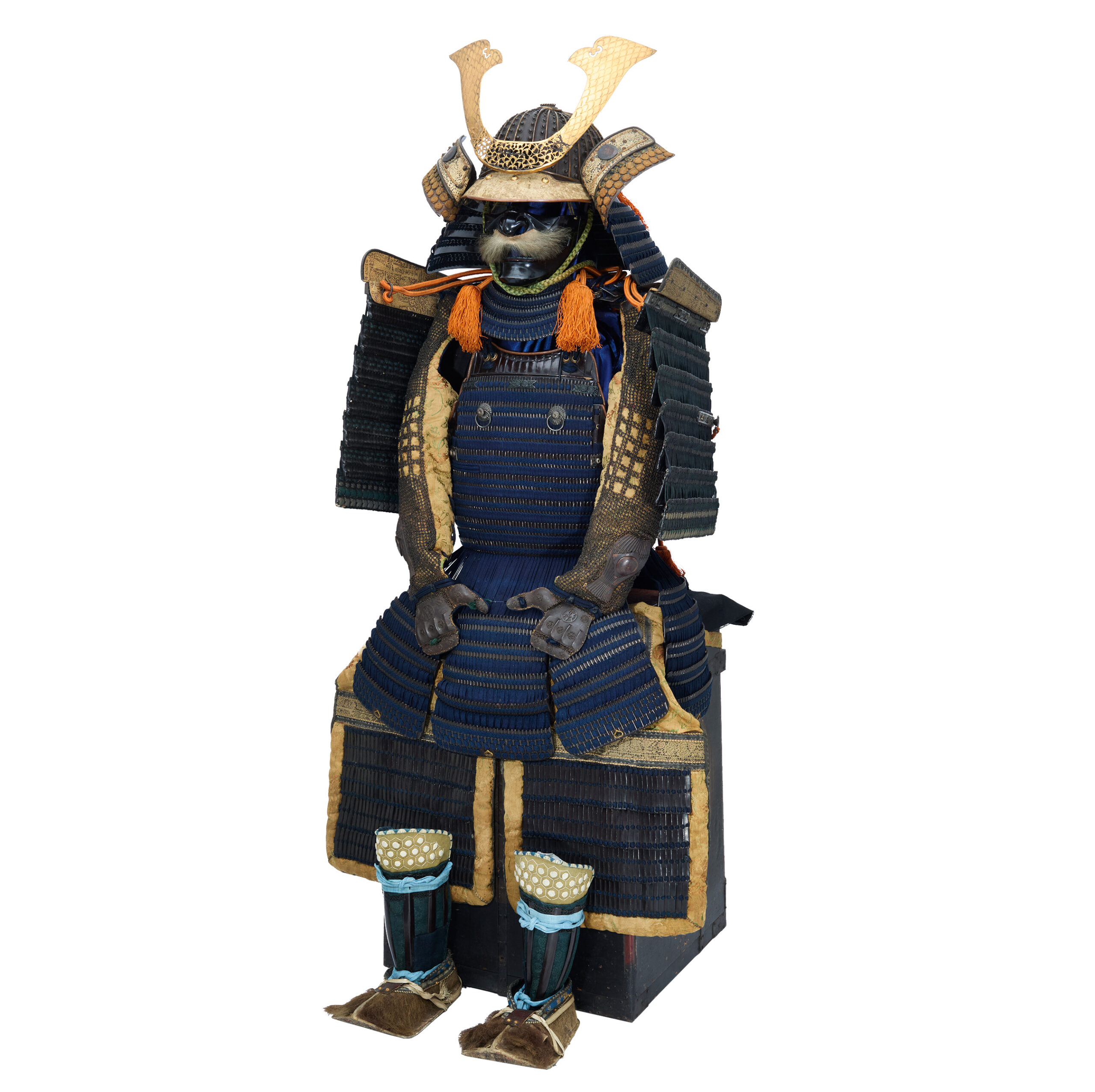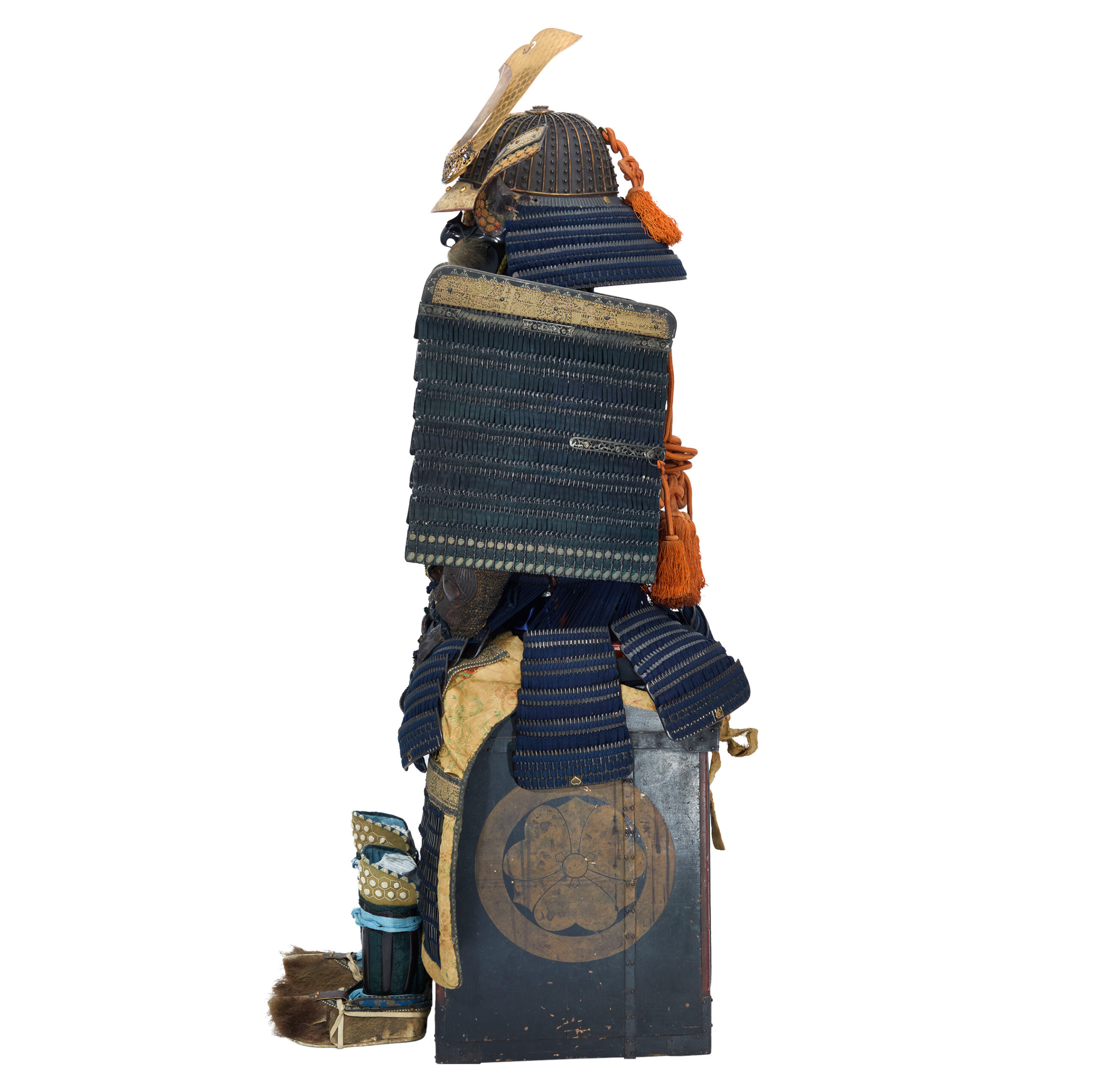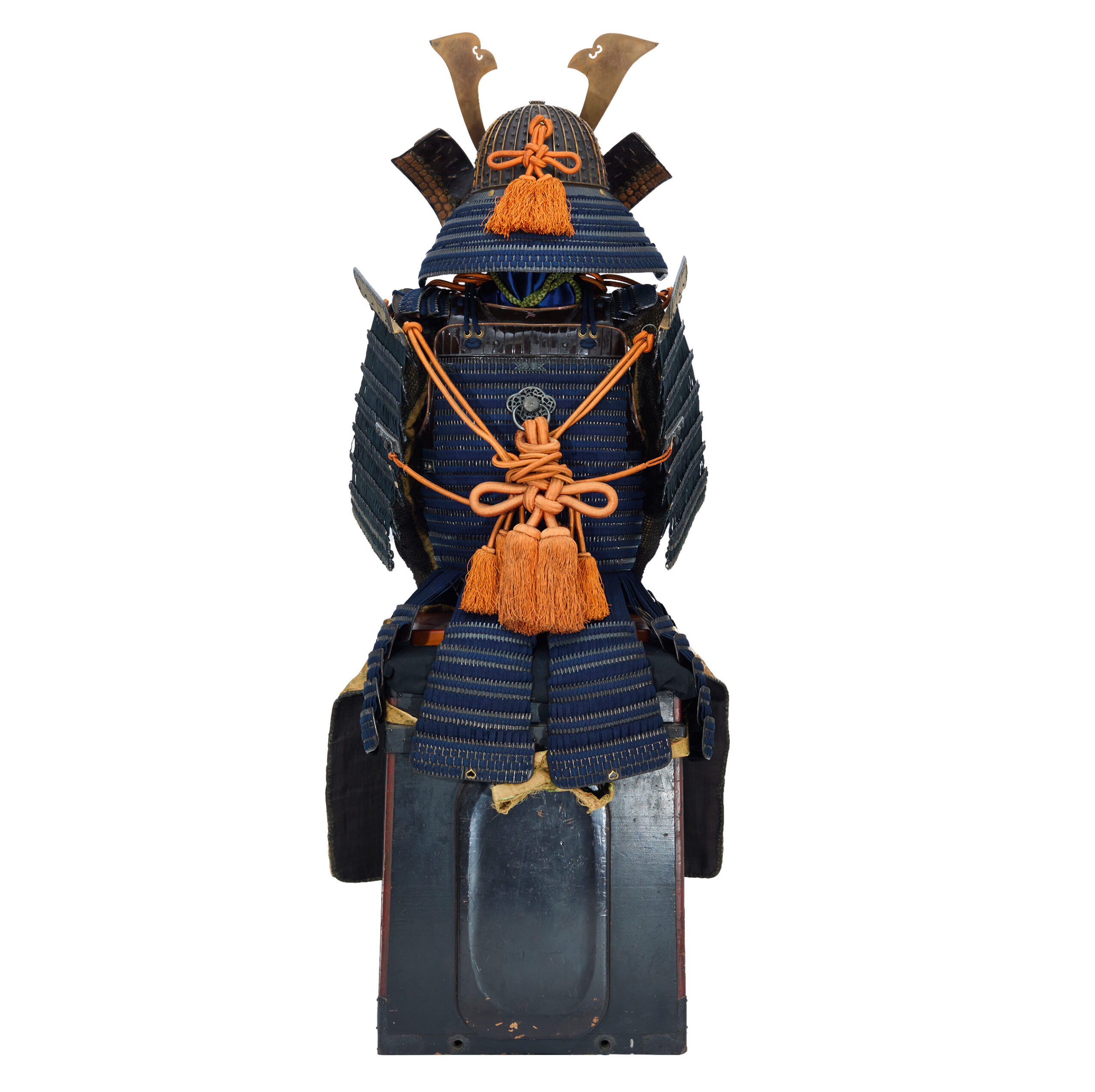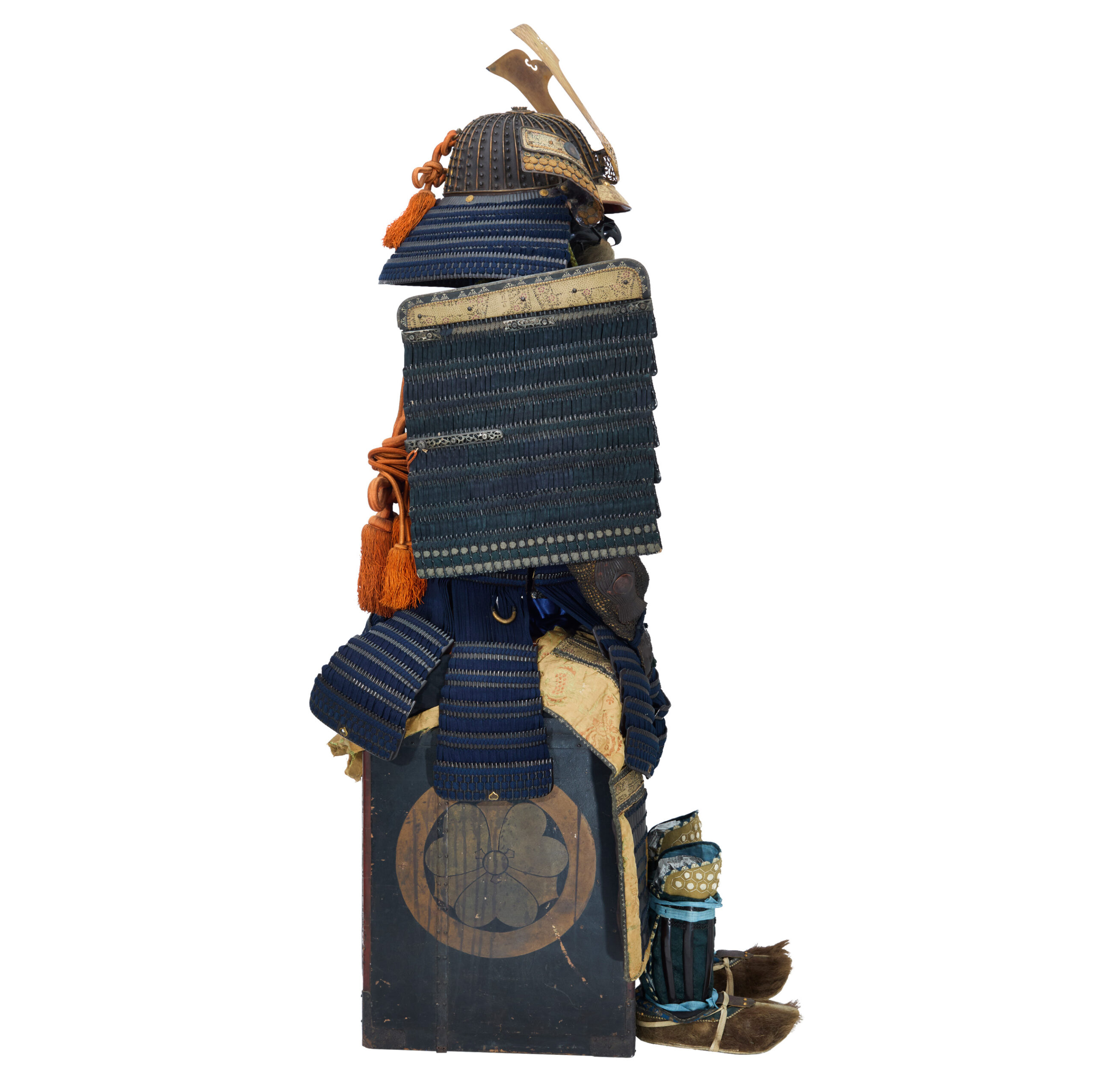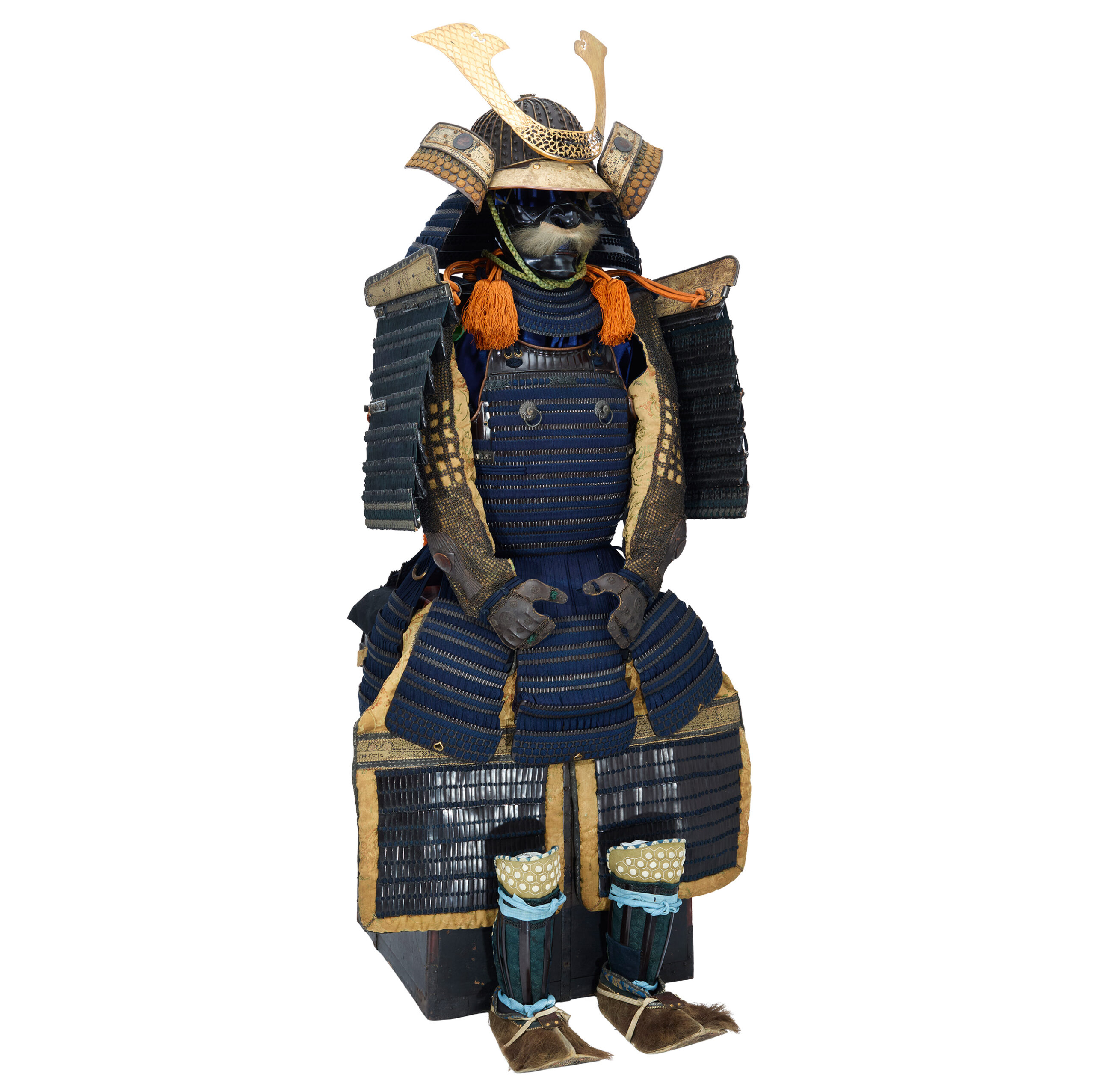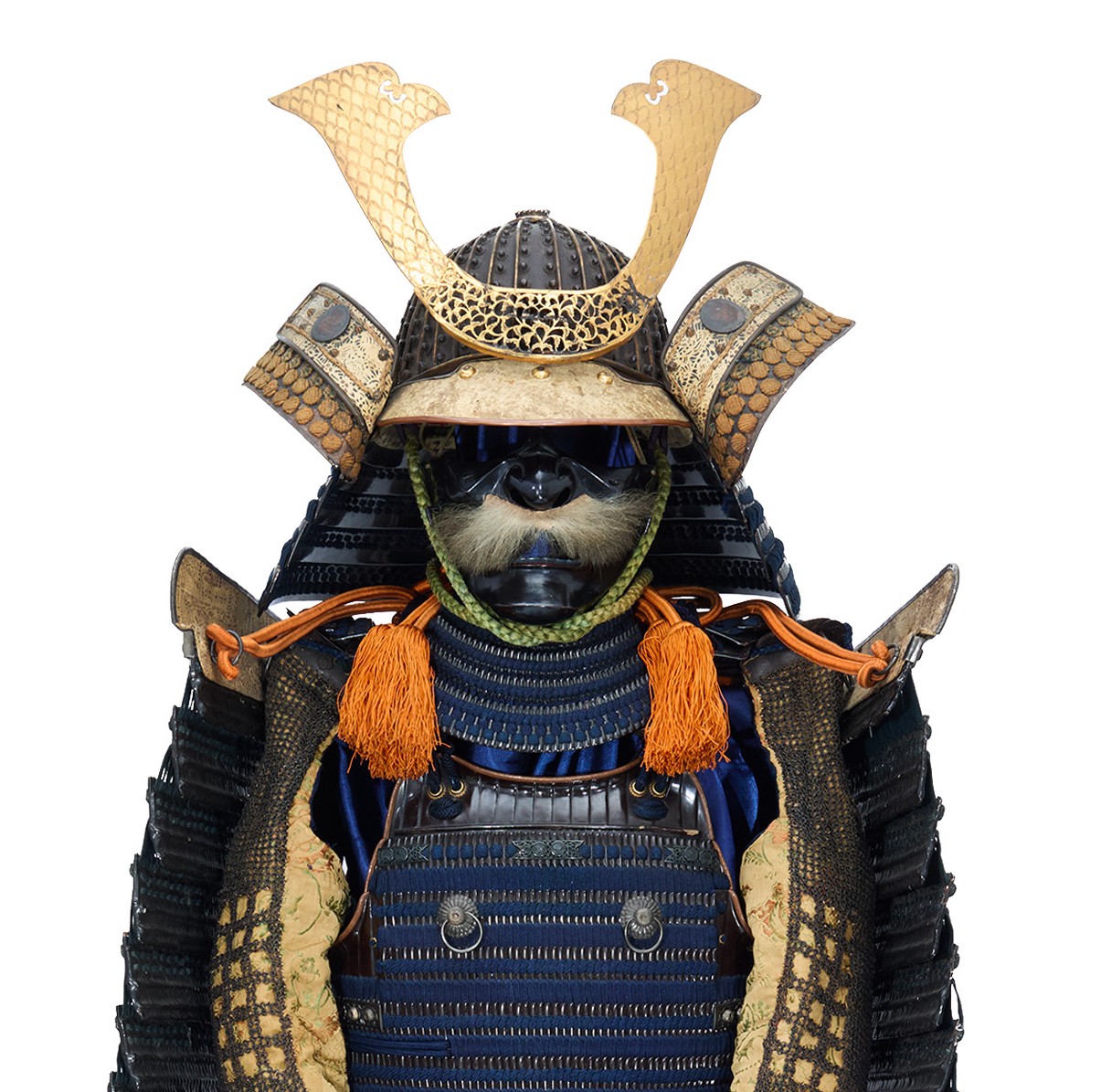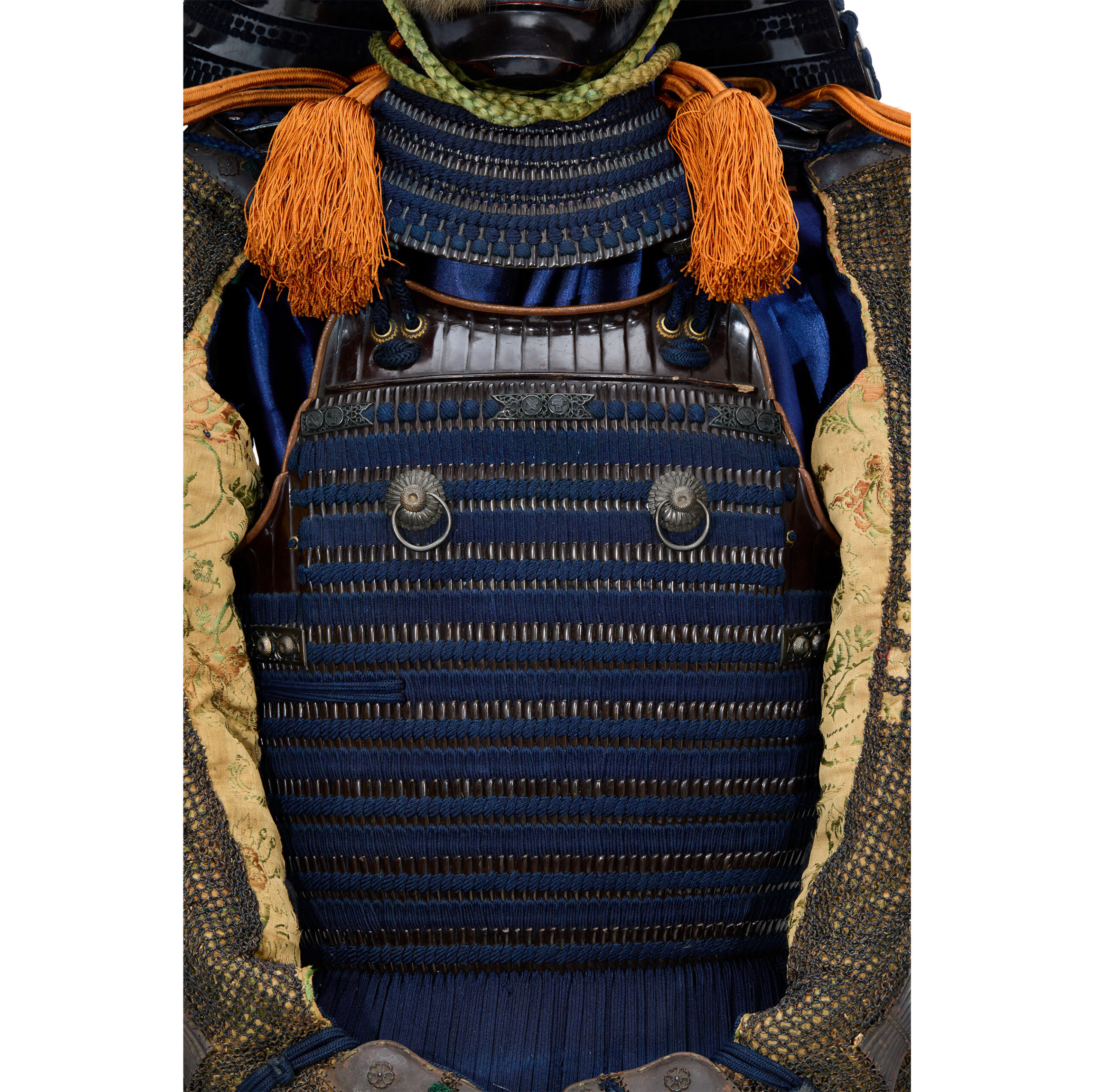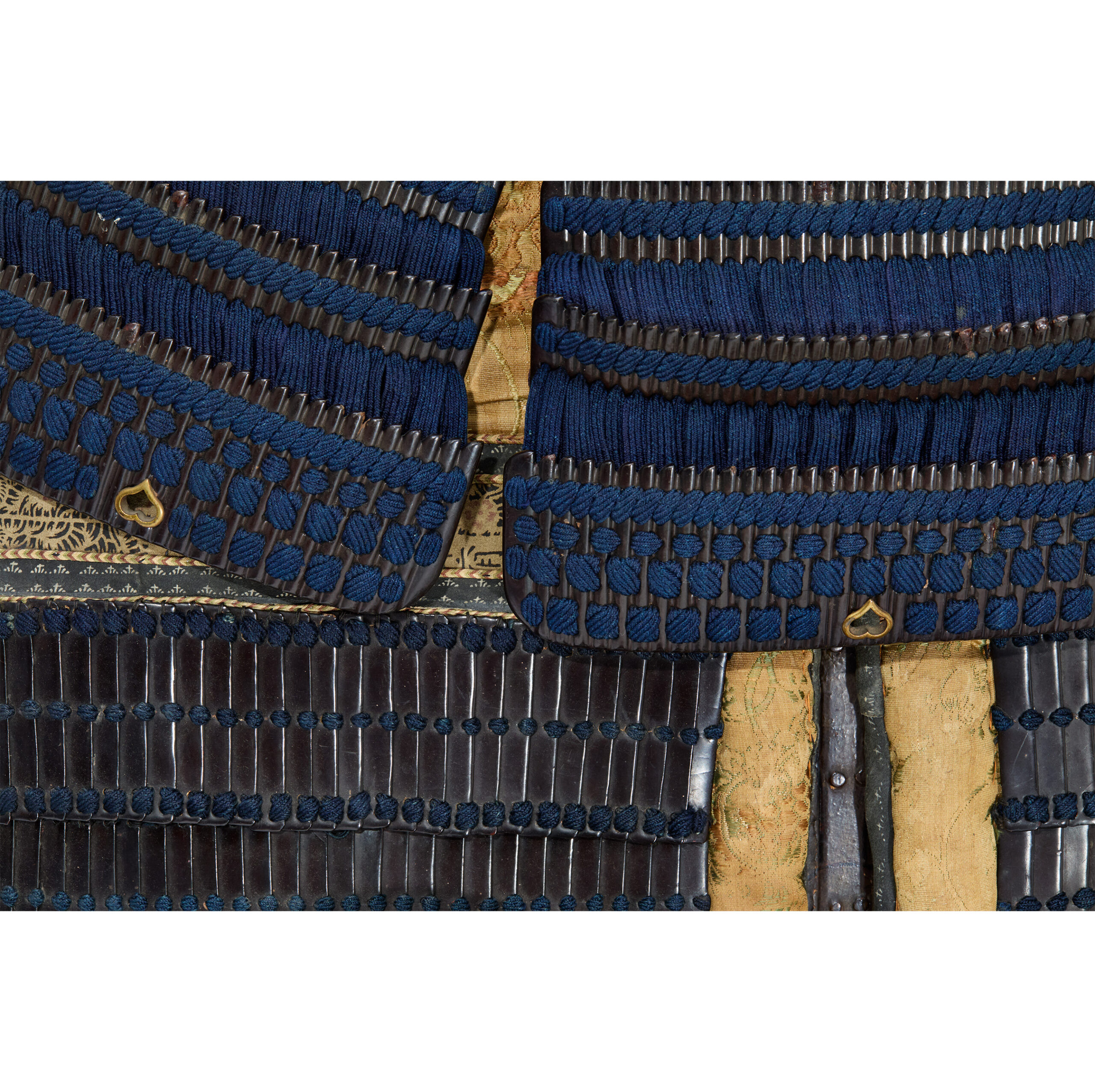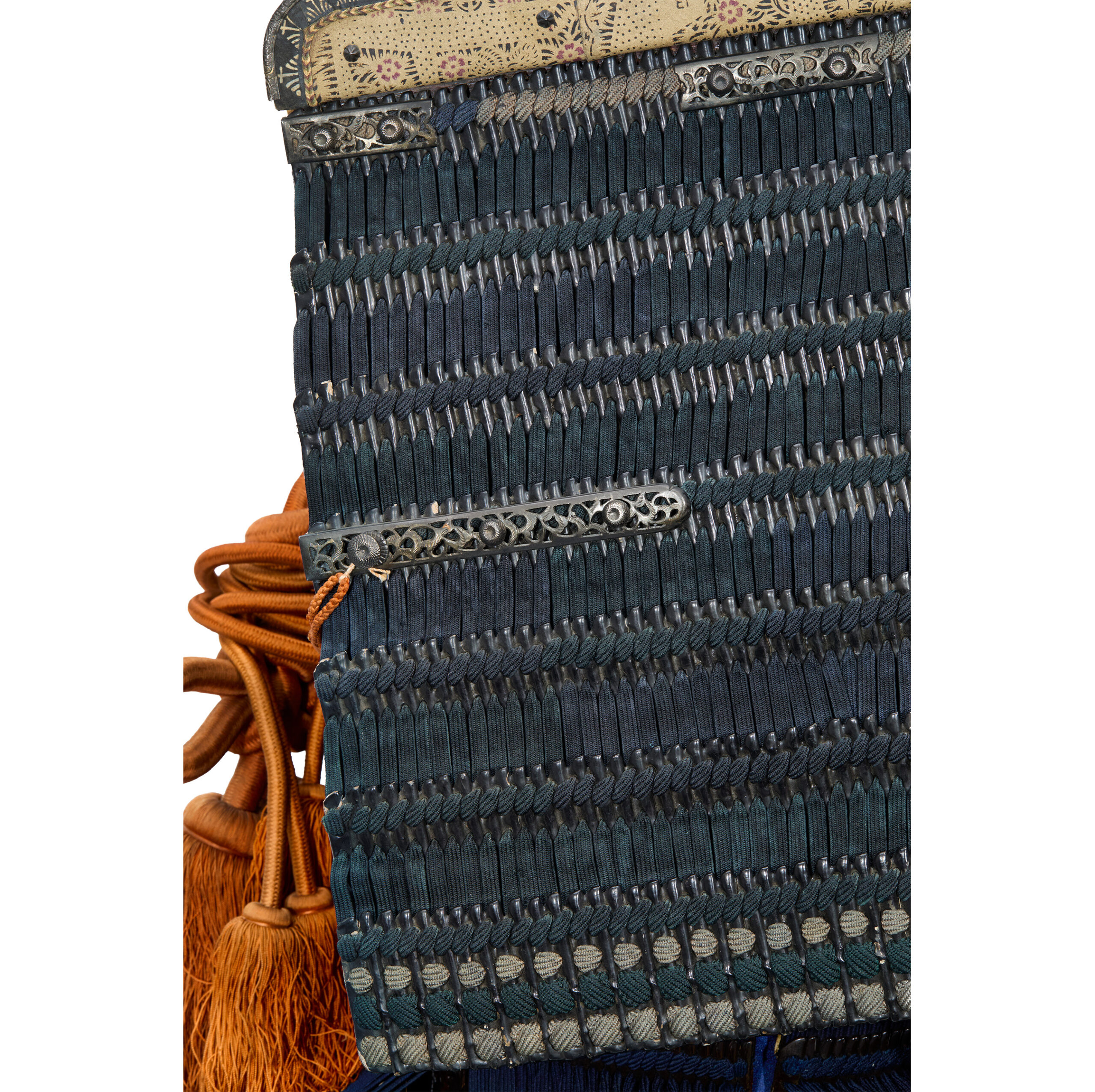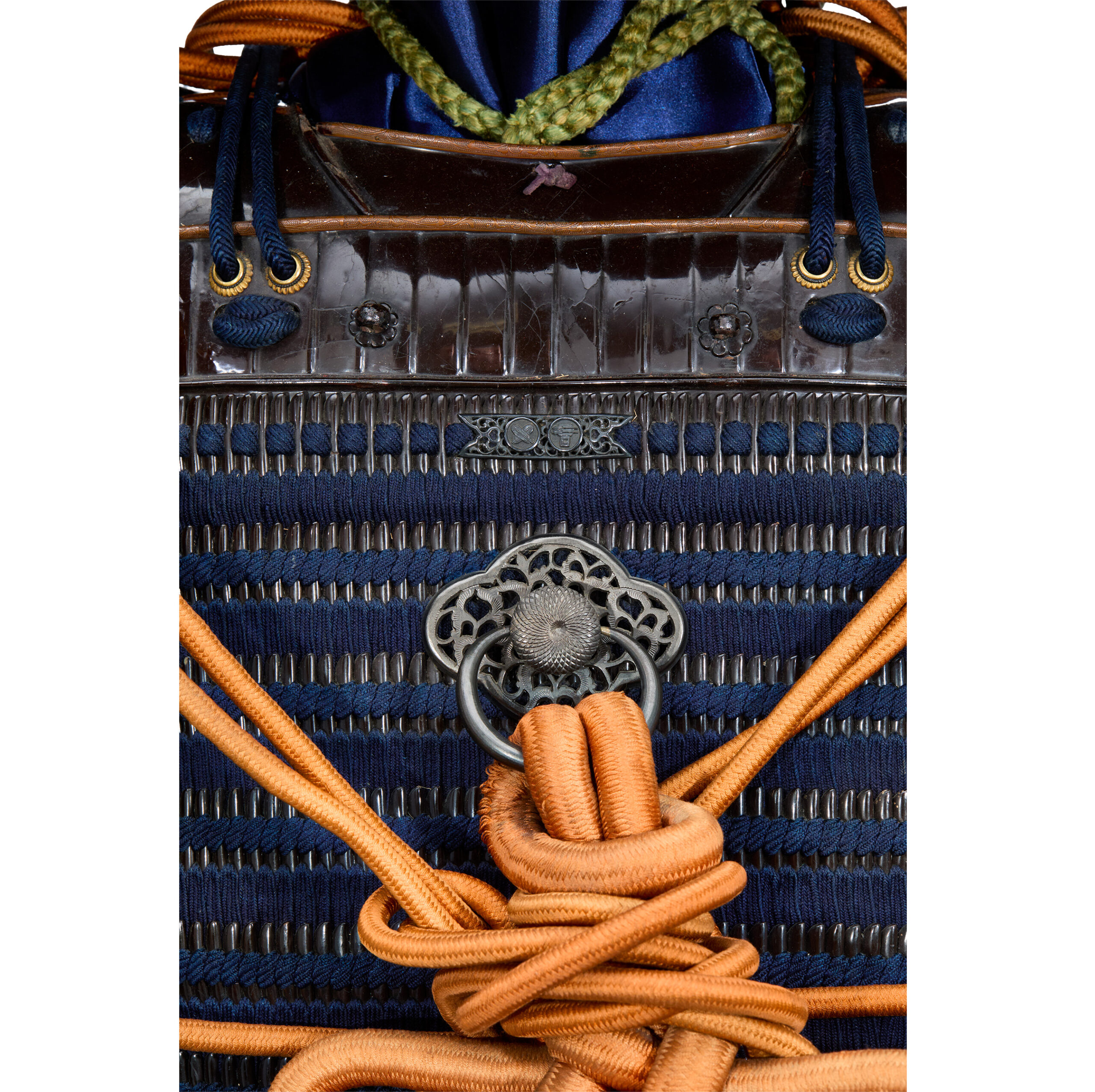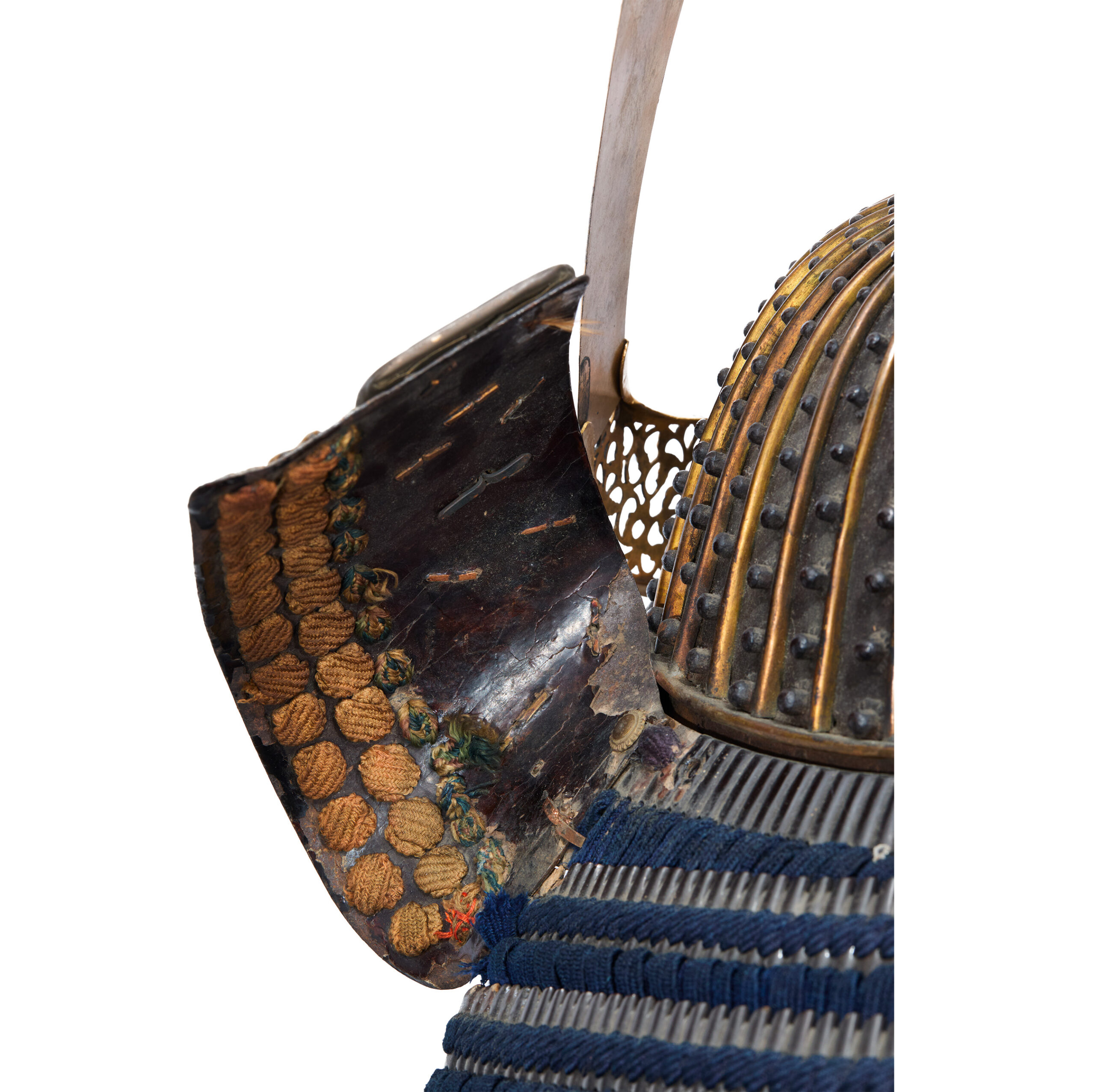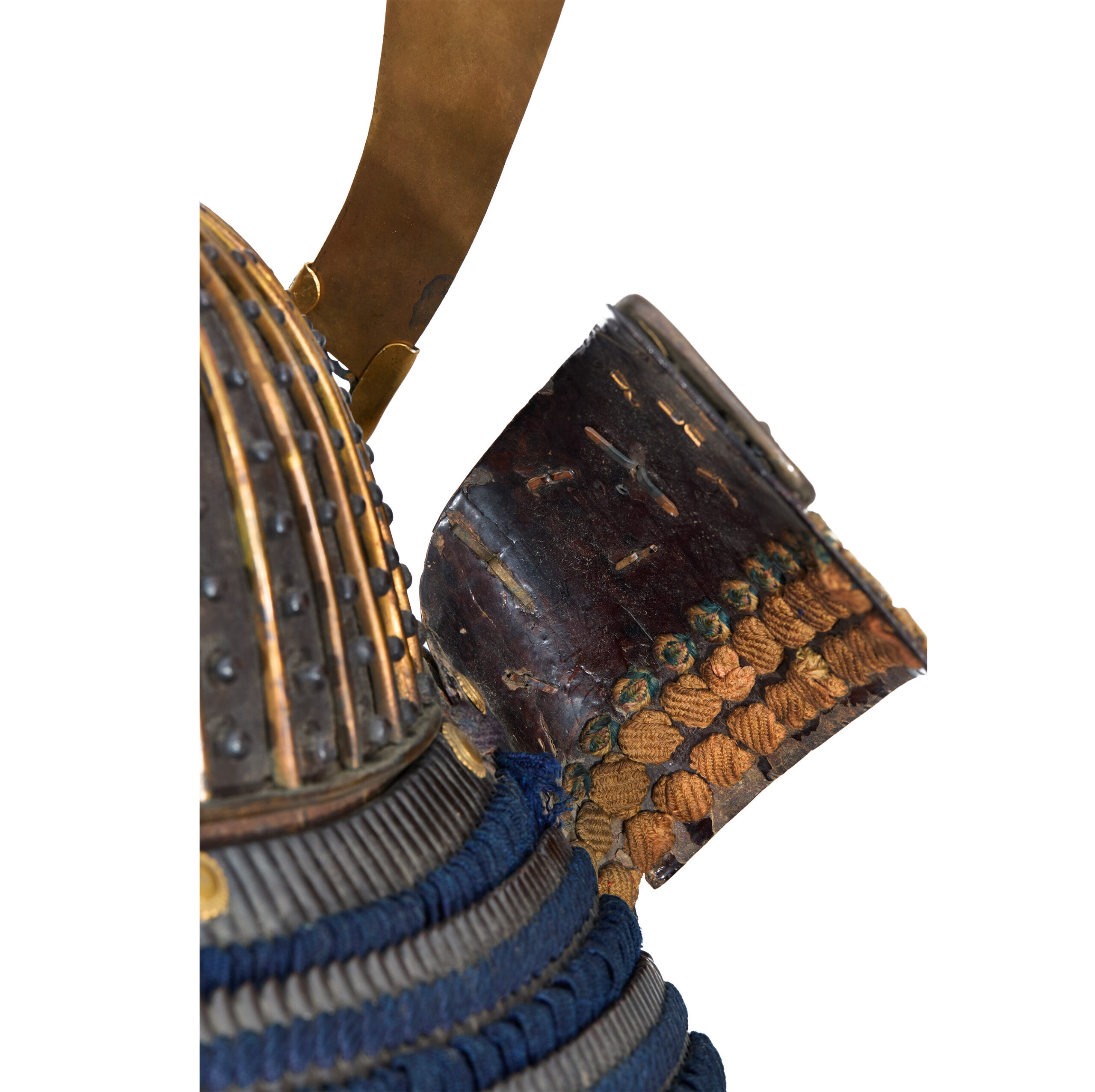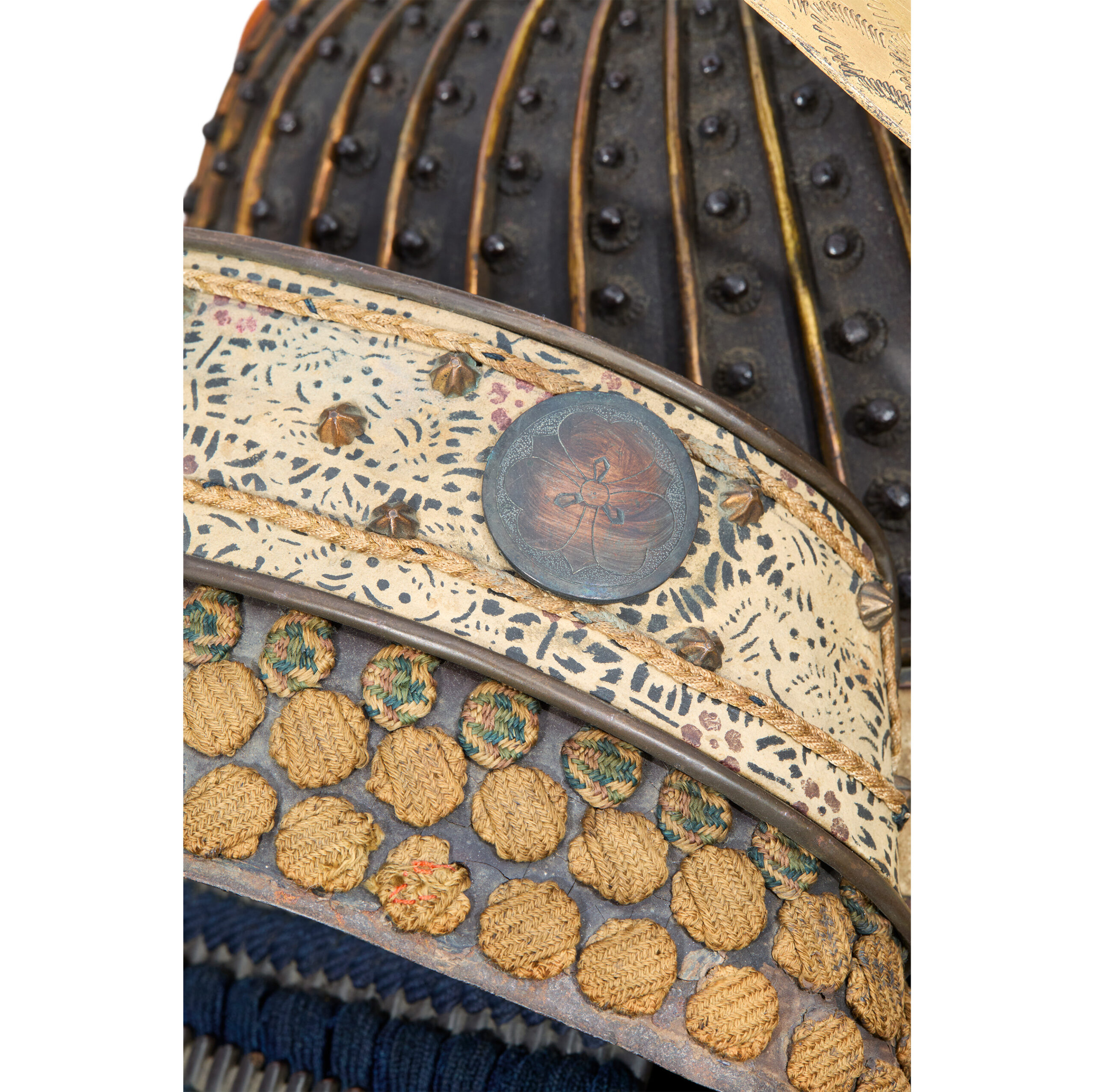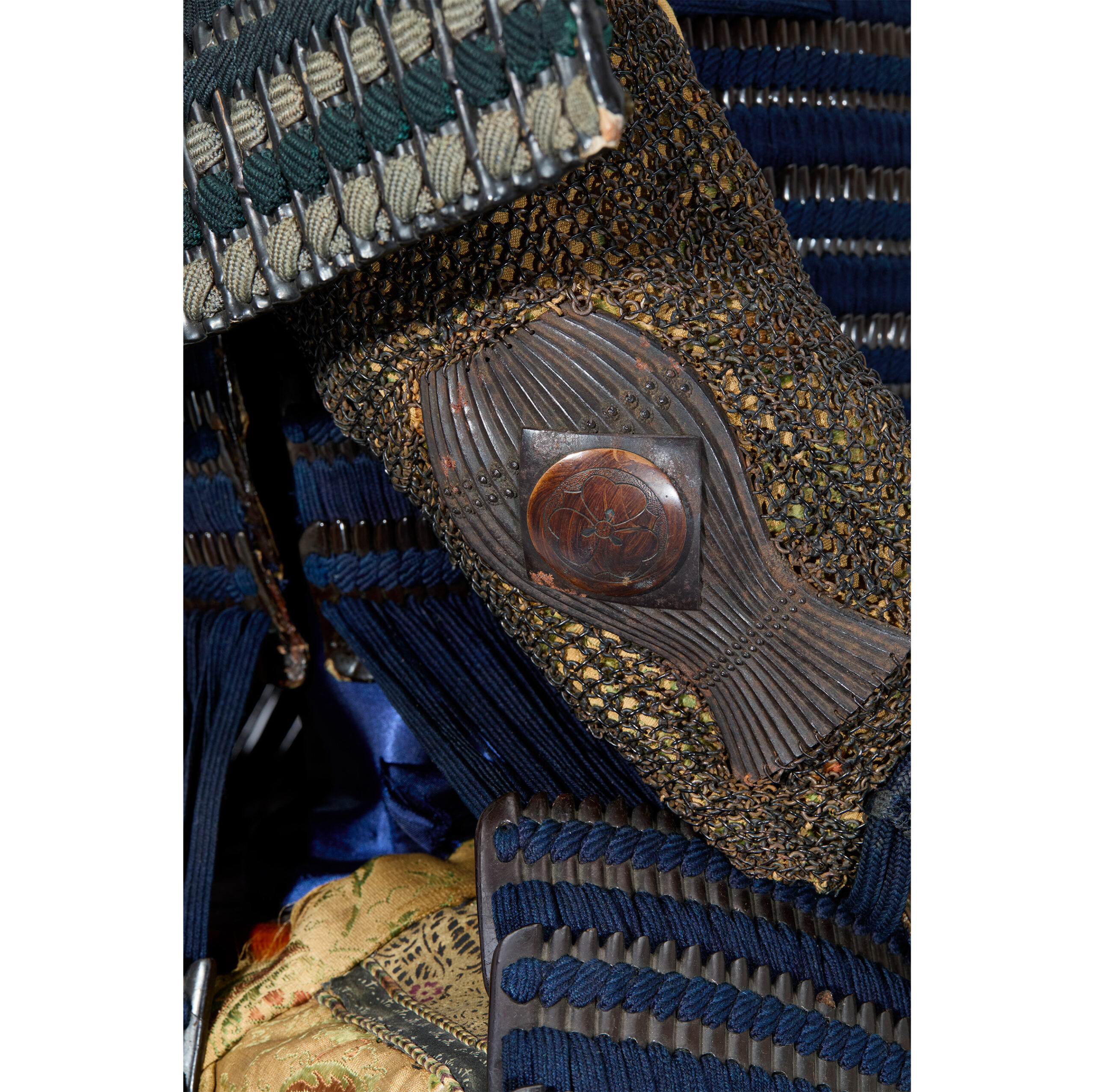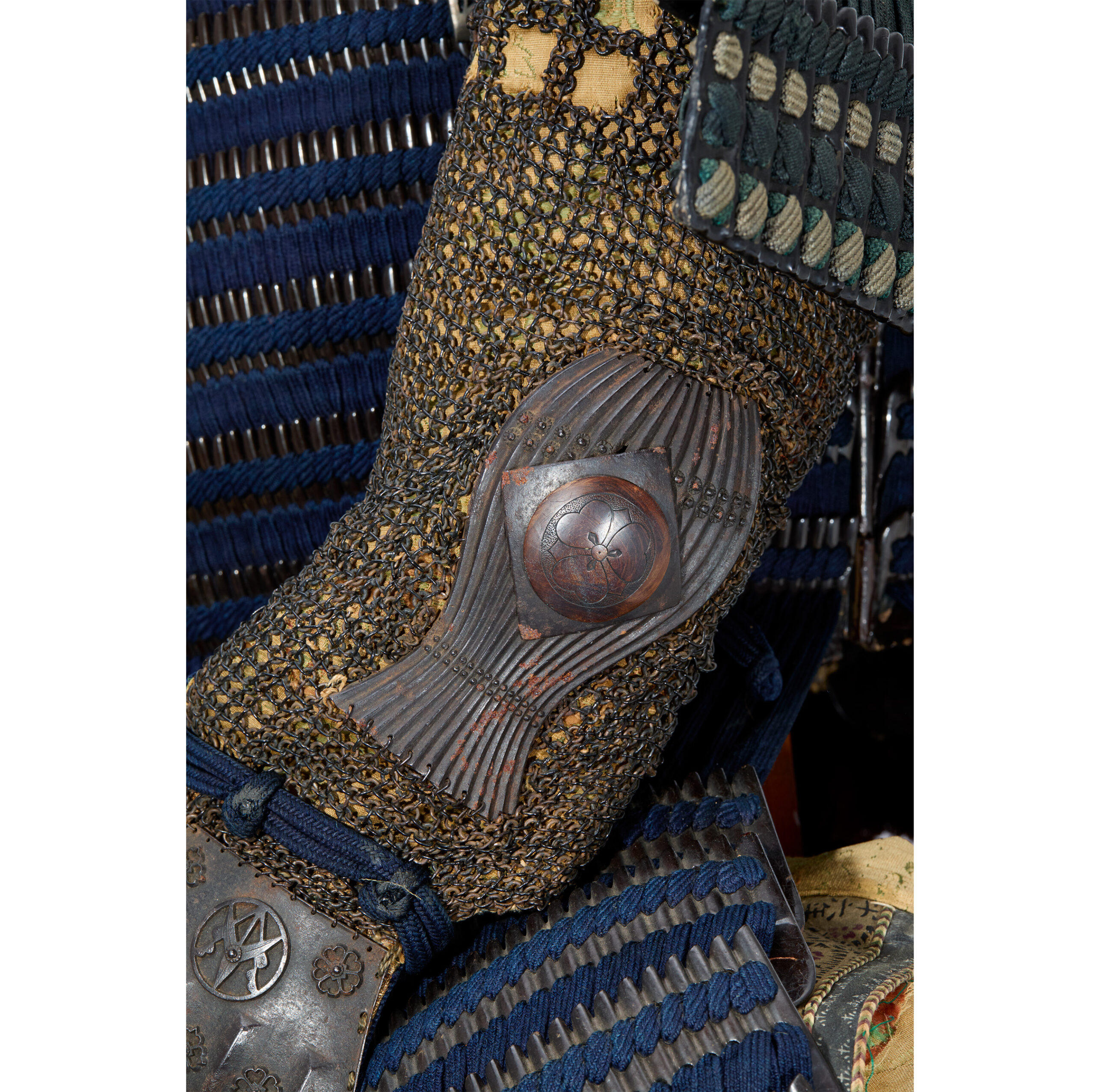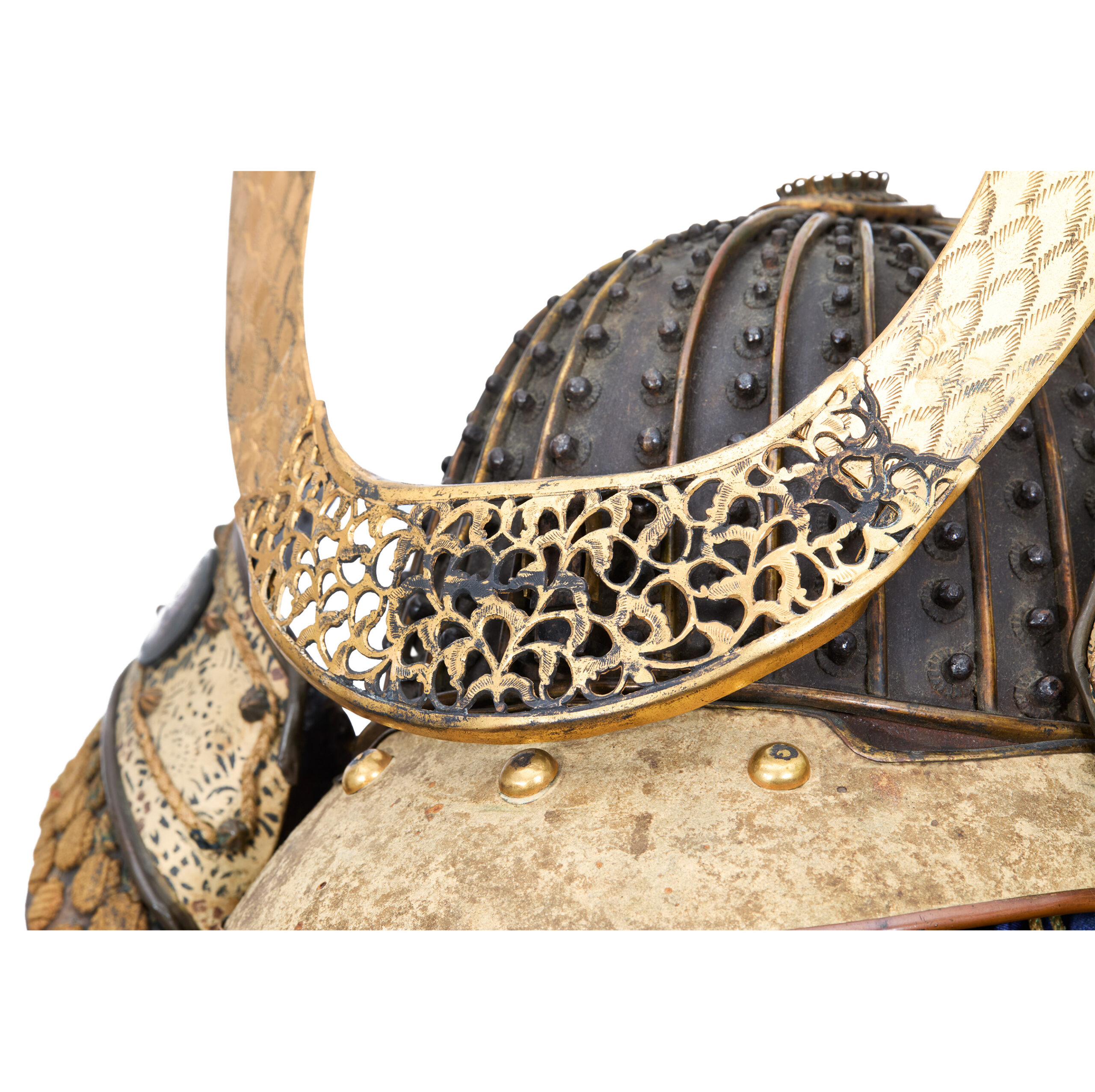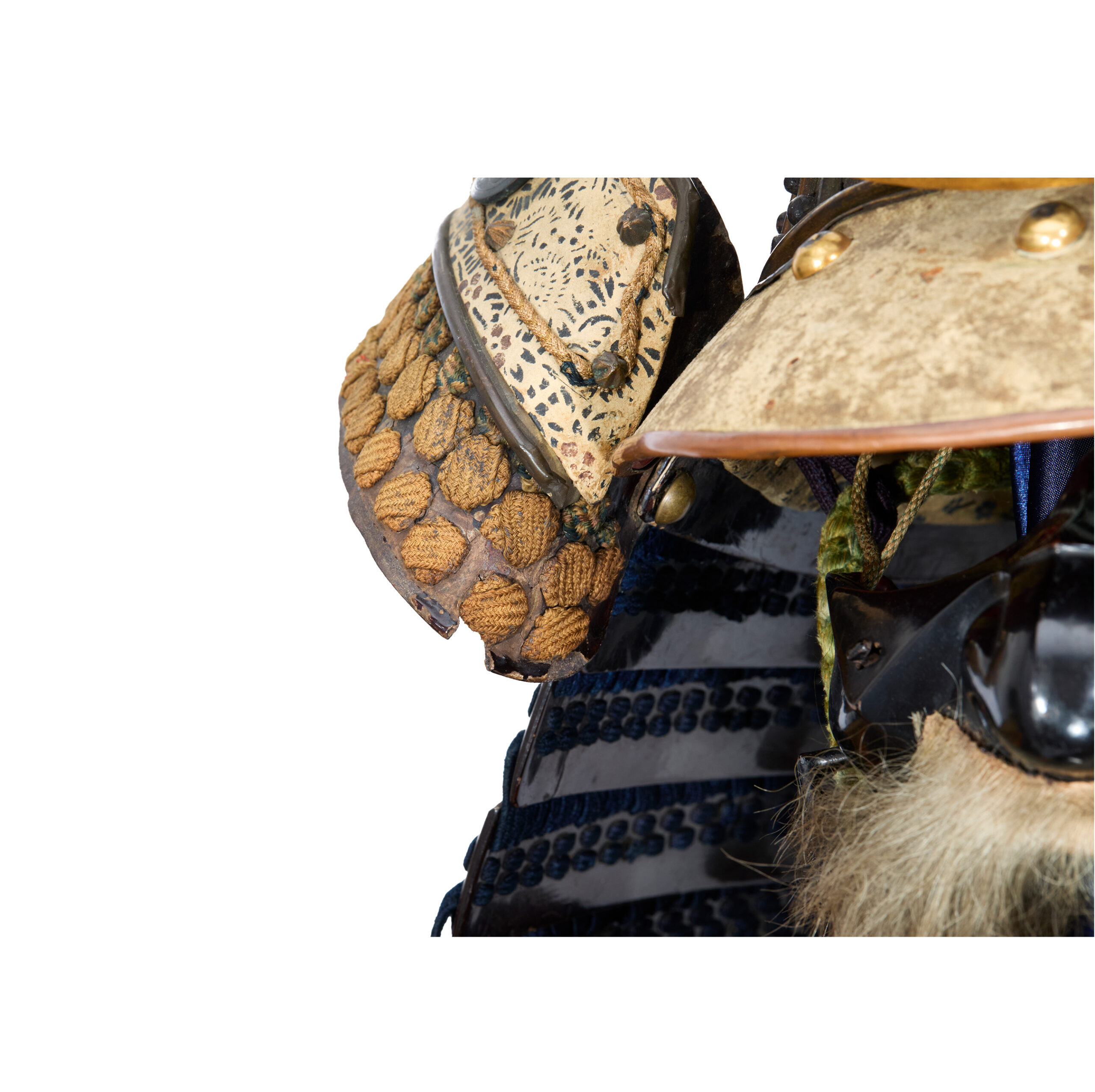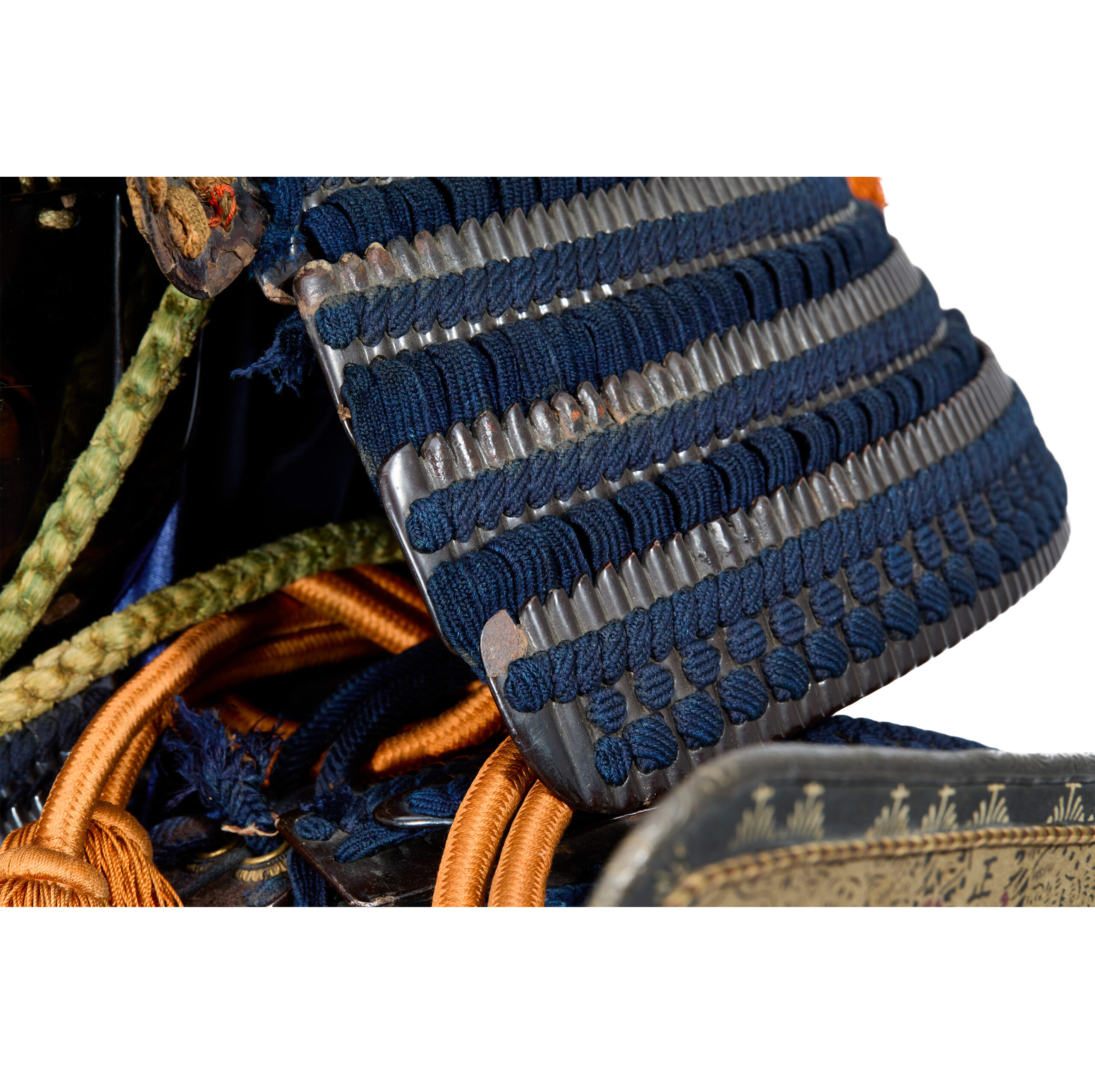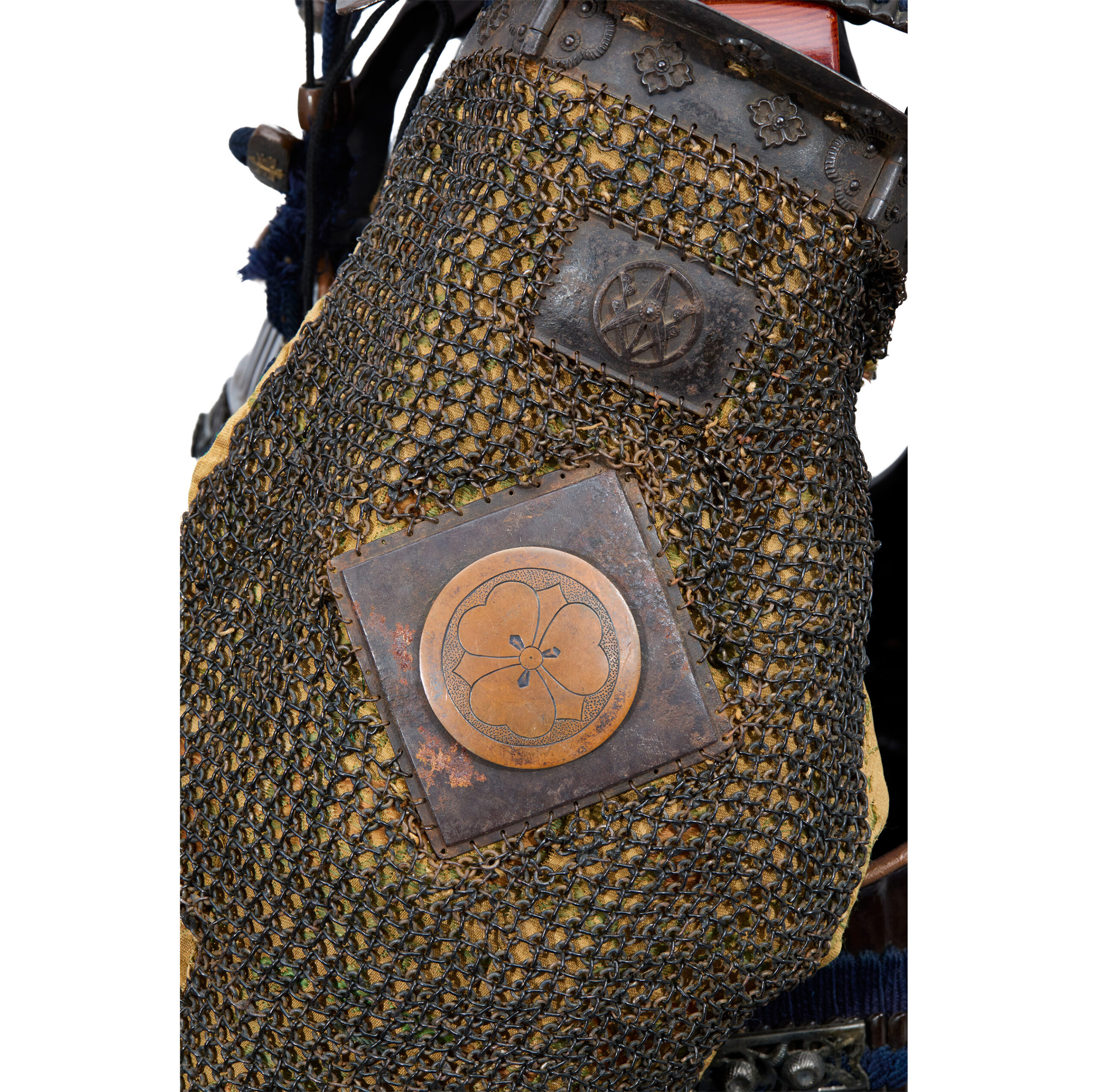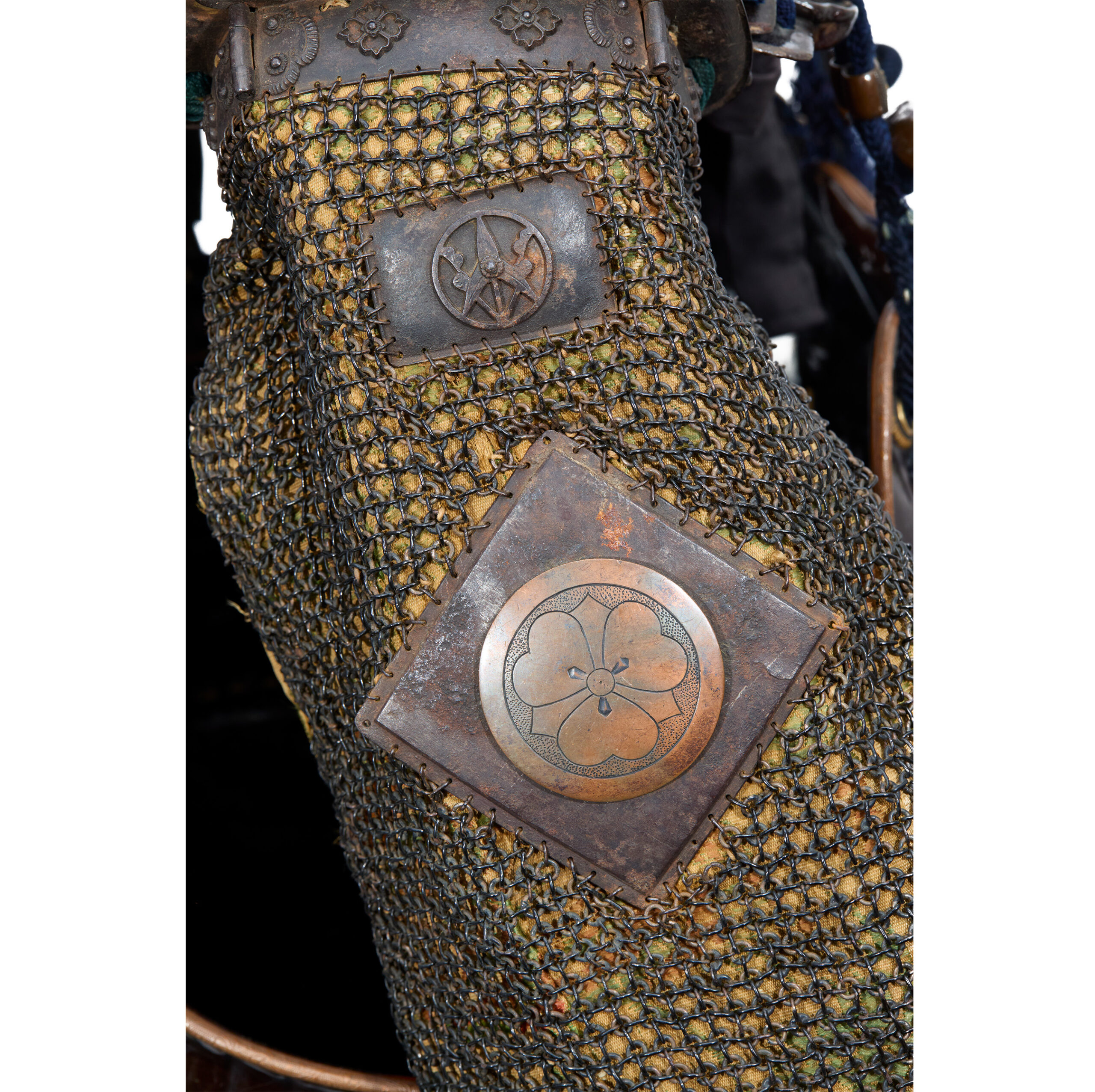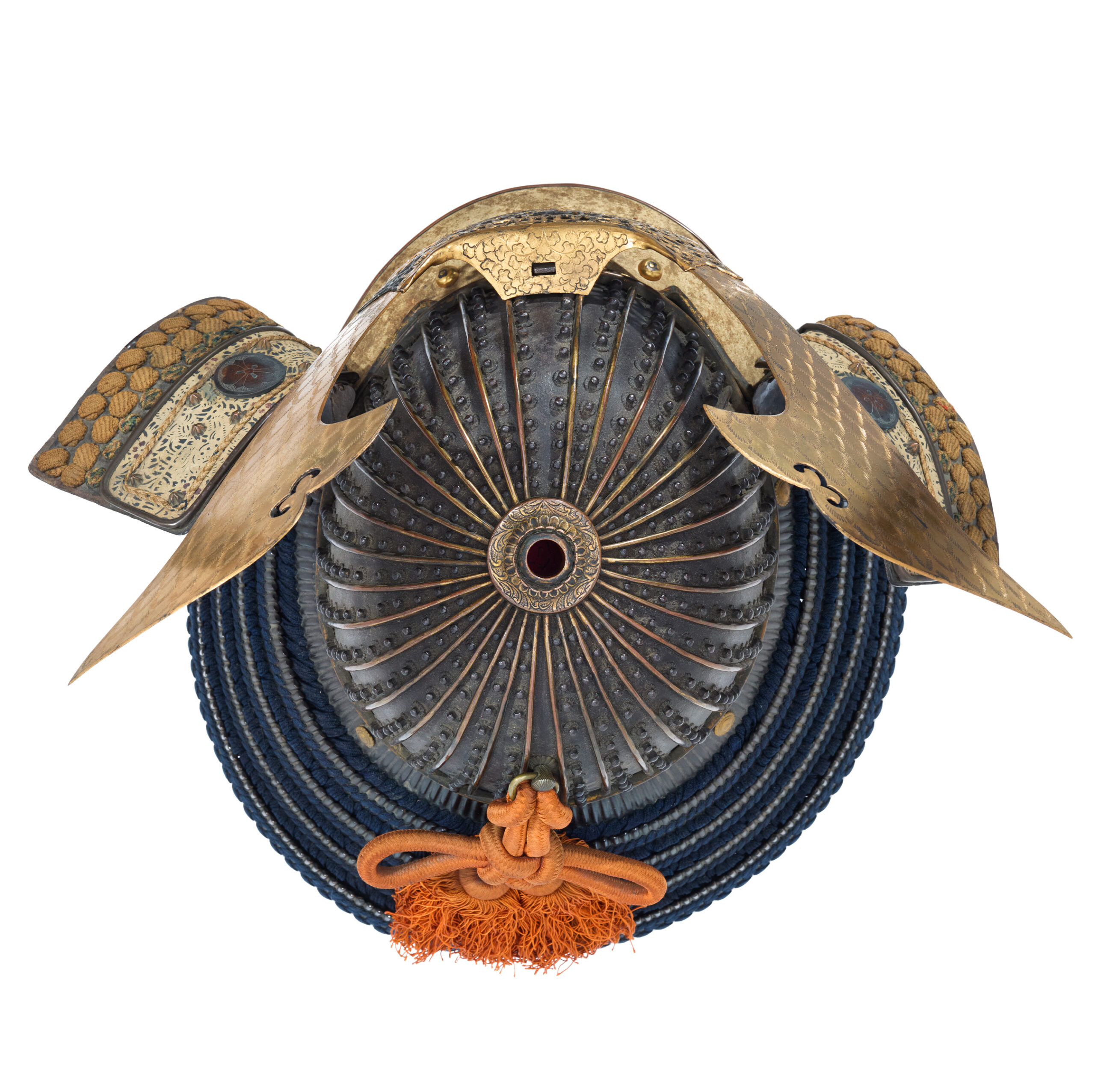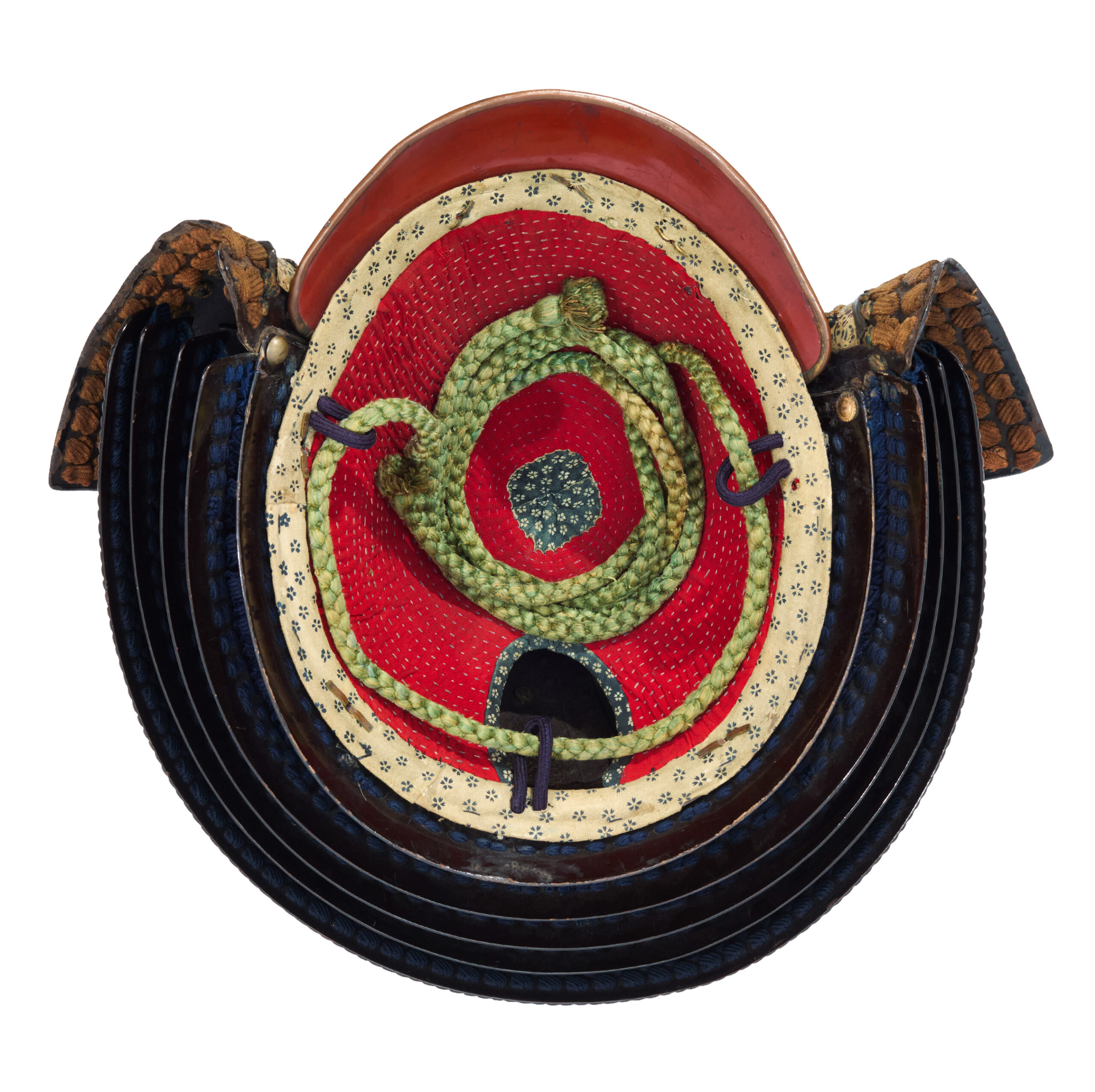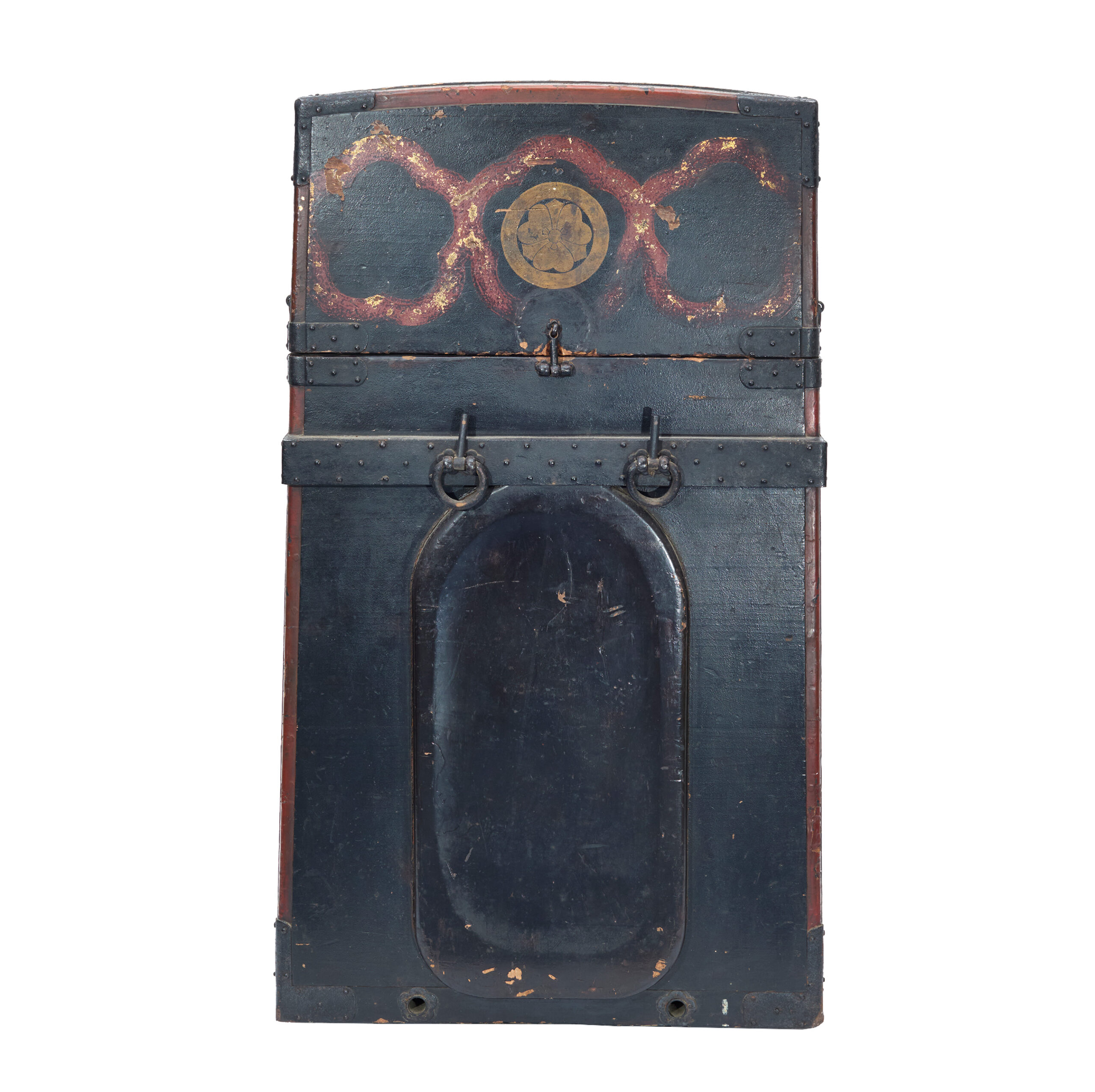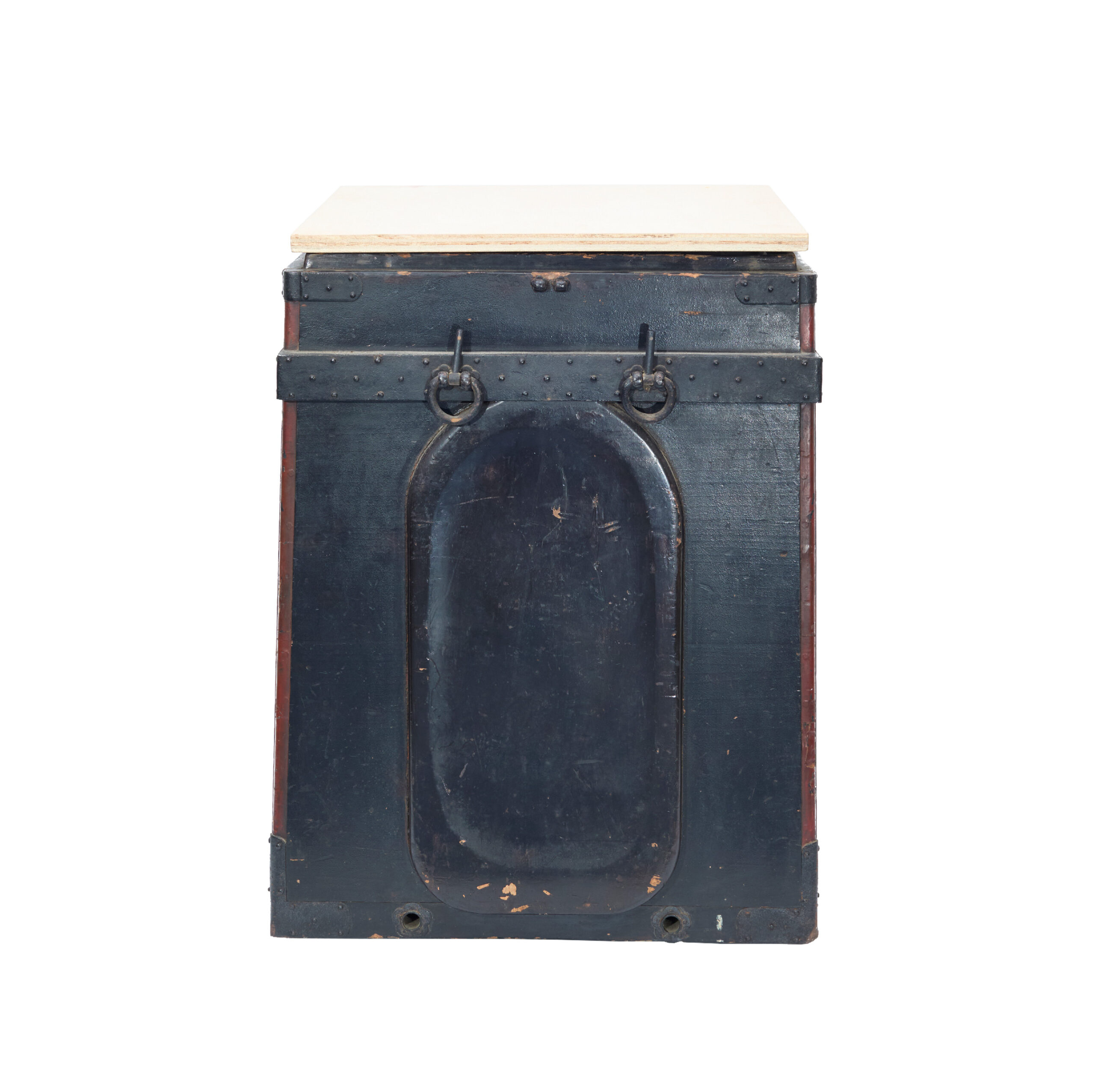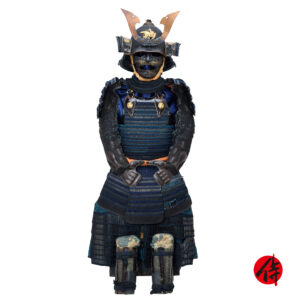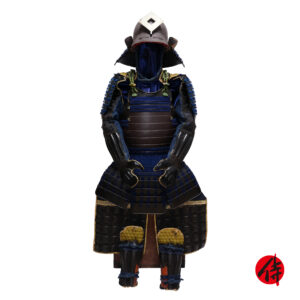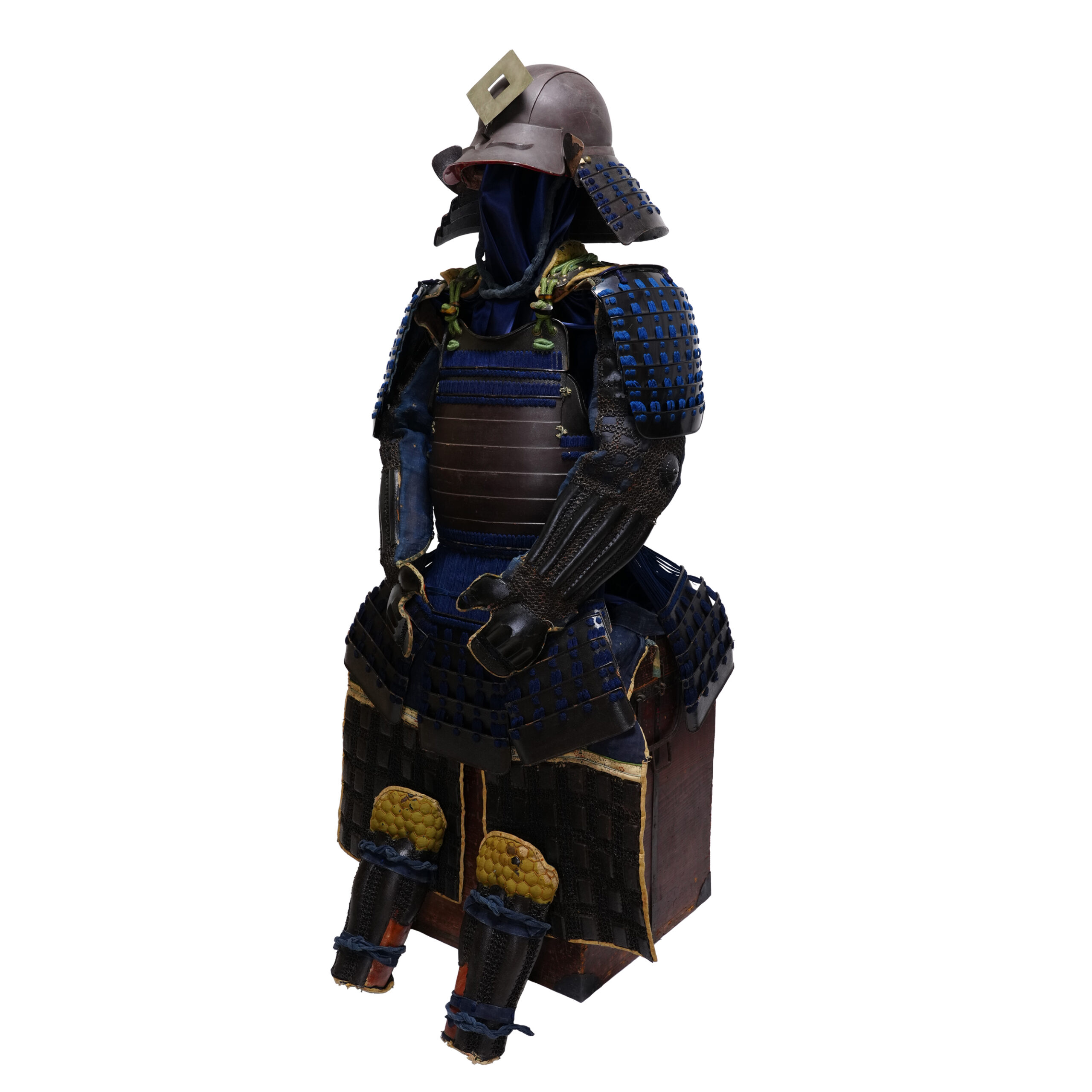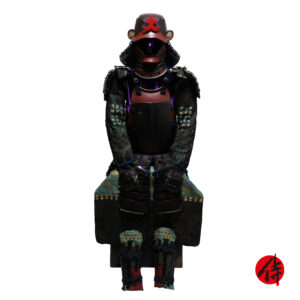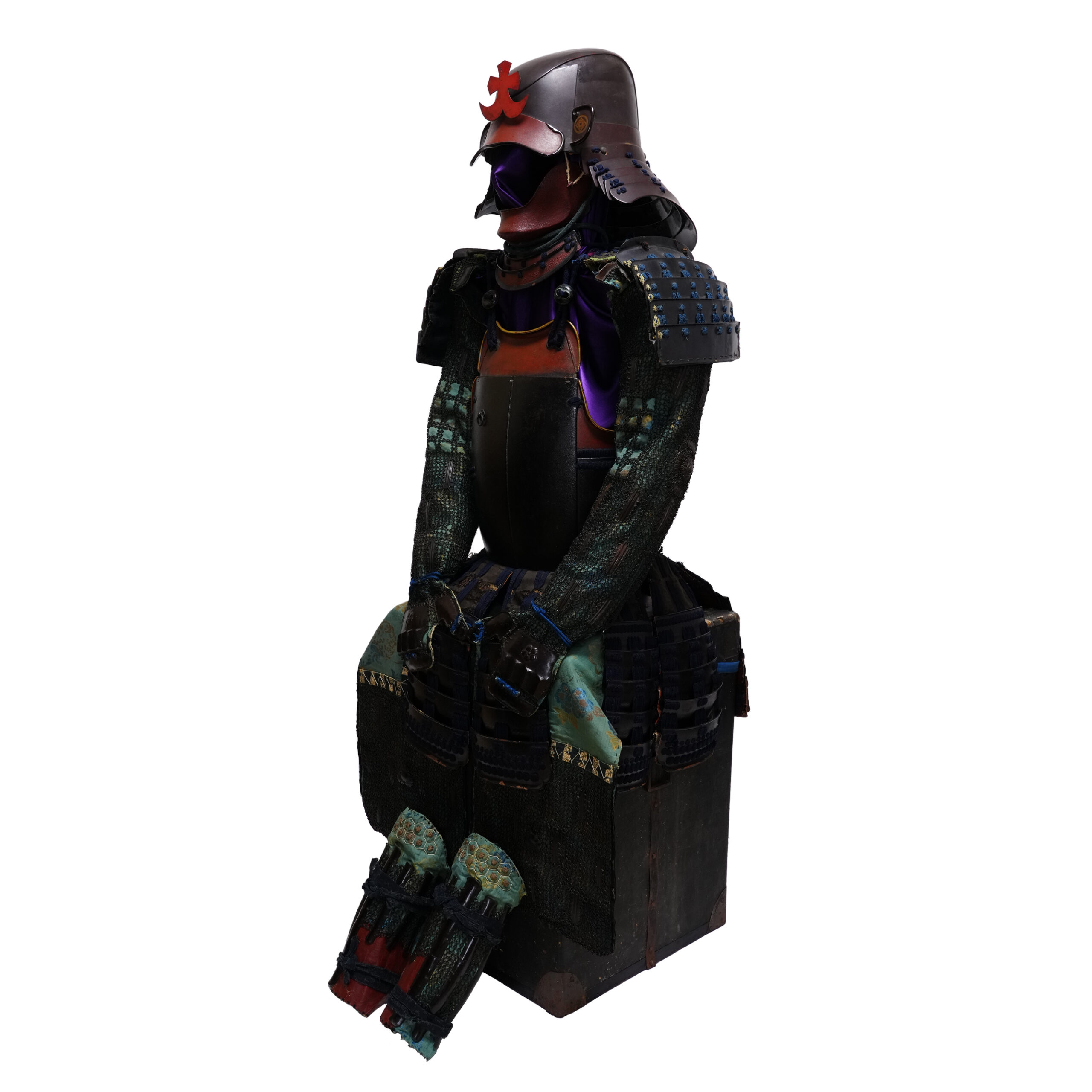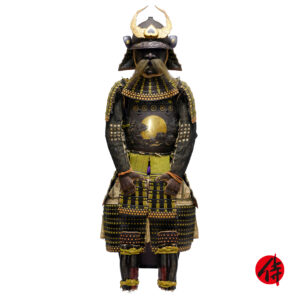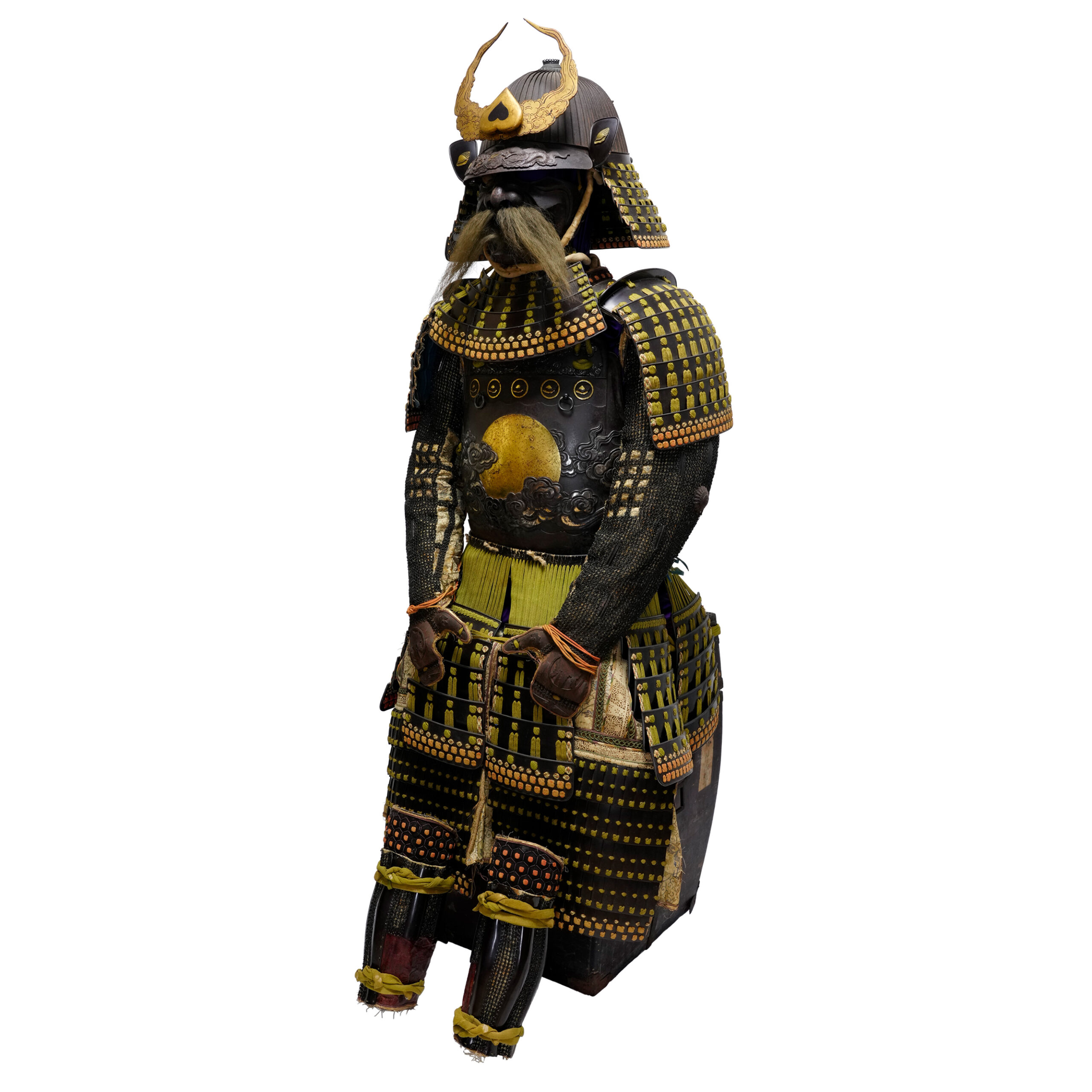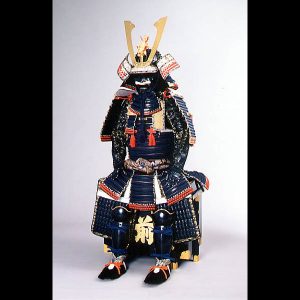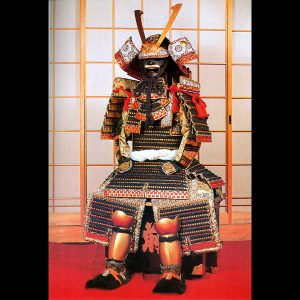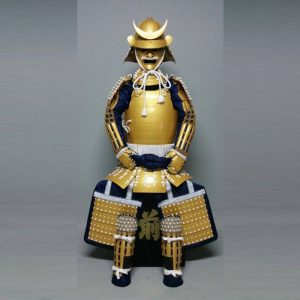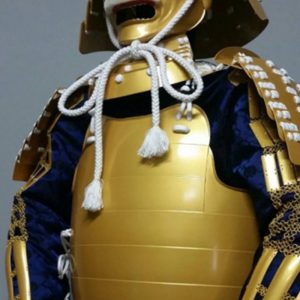Antique Edo Period Nimai Do Samurai Armor with Tokubetsu Kicho Shiryo Certificate (A-55)
Period: Mid Edo Period (1688-1800)
appraised by The Association for the Research and Preservation of Japanese Helmets and Armor on September 14th 2025. We are expecting to receive its certificate in 2-3 months.
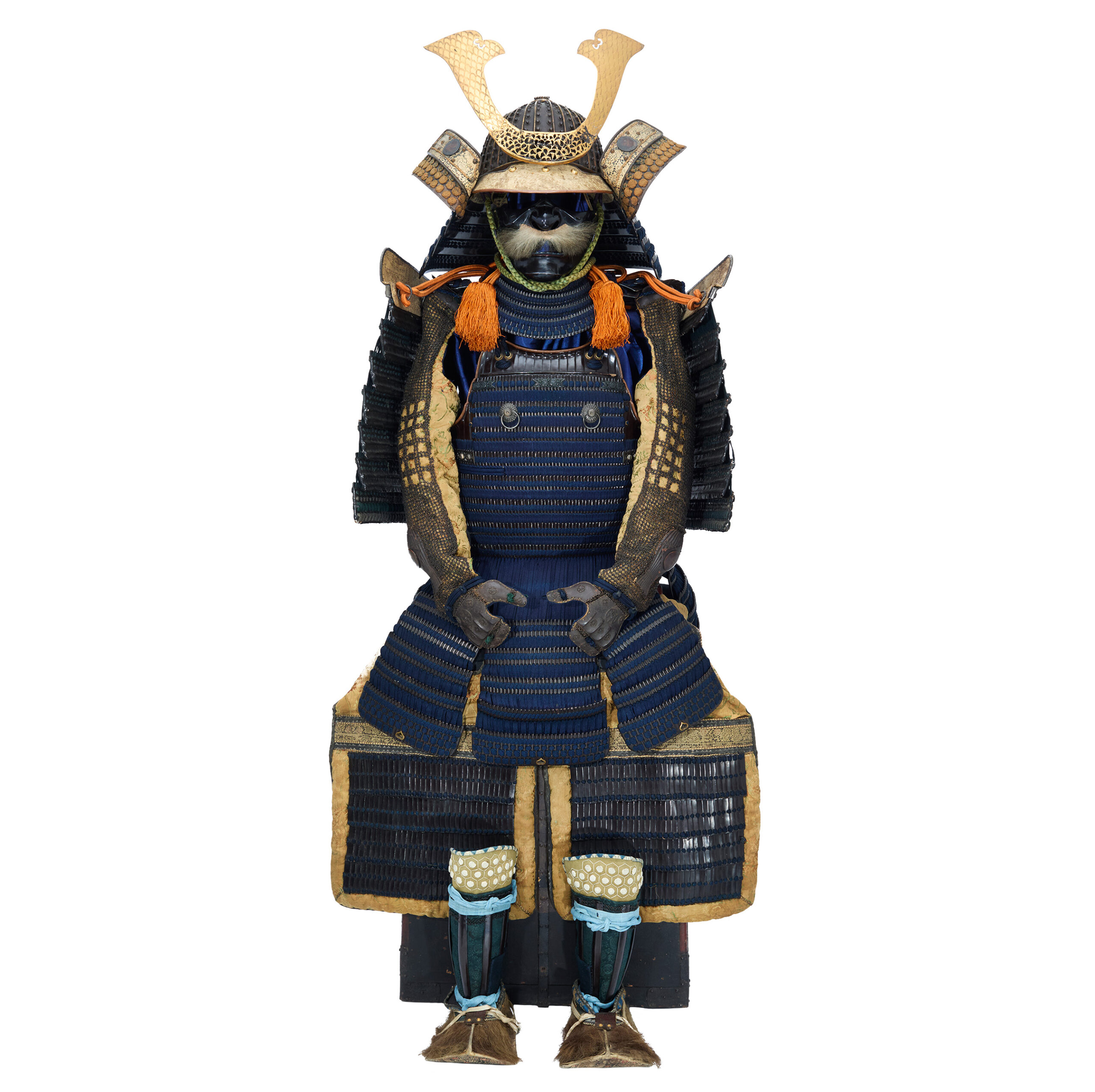
Kabuto (helmet)
■Helmet bowl: Koboshi Kabuto
We believe this Kabuto’s style is the Koboshi Kabuto (小星兜), which is categorized as the Hoshi Kabuto (星兜). The Hoshi Kabuto is a type of Samurai helmet that was born in the middle of the Heian period (平安, around 888-1068). Small rivets that hold iron plates together. These rivets are called the Hoshi (星, star). In the Edo period, artisans made Kabutos not only Kawari Kabutos (please check the paragraph below) but also ancient-style Kabutos. For example, in the case of the Hoshi Kabuto, the Hoshis become smaller toward the top of the head; this form is called the Rinotori (厘劣り). It differs from the old-fashioned Hoshi Kabuto, in which all the Hoshis were the same size.
The Kabuto (兜, helmet) is a protector for the head. When people started using the Kabuto, it was initially designed for practical use. However, the principal purpose of its design has changed with time; Samurai warriors tried to express their dignity, personality, or religion by wearing the characteristic designed Kabutos. According to a theory, these uniquely designed Kabutos were made from the late Muromachi (室町, 1336-1573) to the Edo period (江戸, 1603-1868). This type of Kabuto is categorized as the Kawari Kabuto (変わり兜), and a variety of materials were used to create them. For example, animal fur, seashells, plants, and paper were used as materials for decoration.
Here, we would like to introduce you to a little bit more about the history of Kabutos. Before the Kawari Kabuto’s production, Suji Kabutos (筋兜) appeared during the Nanbokuchou (南北朝, 1337-1392) period. At that time, the tactic was gradually changed from the piggyback fight style to battle with the Tachi (太刀) swords and the Naginata (薙刀, Japanese halberd) on the ground. Therefore, there was a rise in demand for the weight-saving of the Kabuto. Also, to turn the attack by swords, a new type of structure was invented: the Suji Kabuto. Its form slides sword attacks when weapons hit the Kabuto. It is said that the production of the Suji Kabuto prospered in the Muromachi period.
Inside the helmet, there is an inscription, saying that Munetsugu (宗次). We believe this maker belonged to Mochin school. Myochin is the name of a famous armor-making school that has been continuing for generations since the Heian period. Mochin school originally was founded in Kyoto area. And, members of this school moved to other parts of Japan, including Jyoshu (Gunma), Soshu (Kanagawa), Echizen (Fukui), Kaga (Ishikawa).
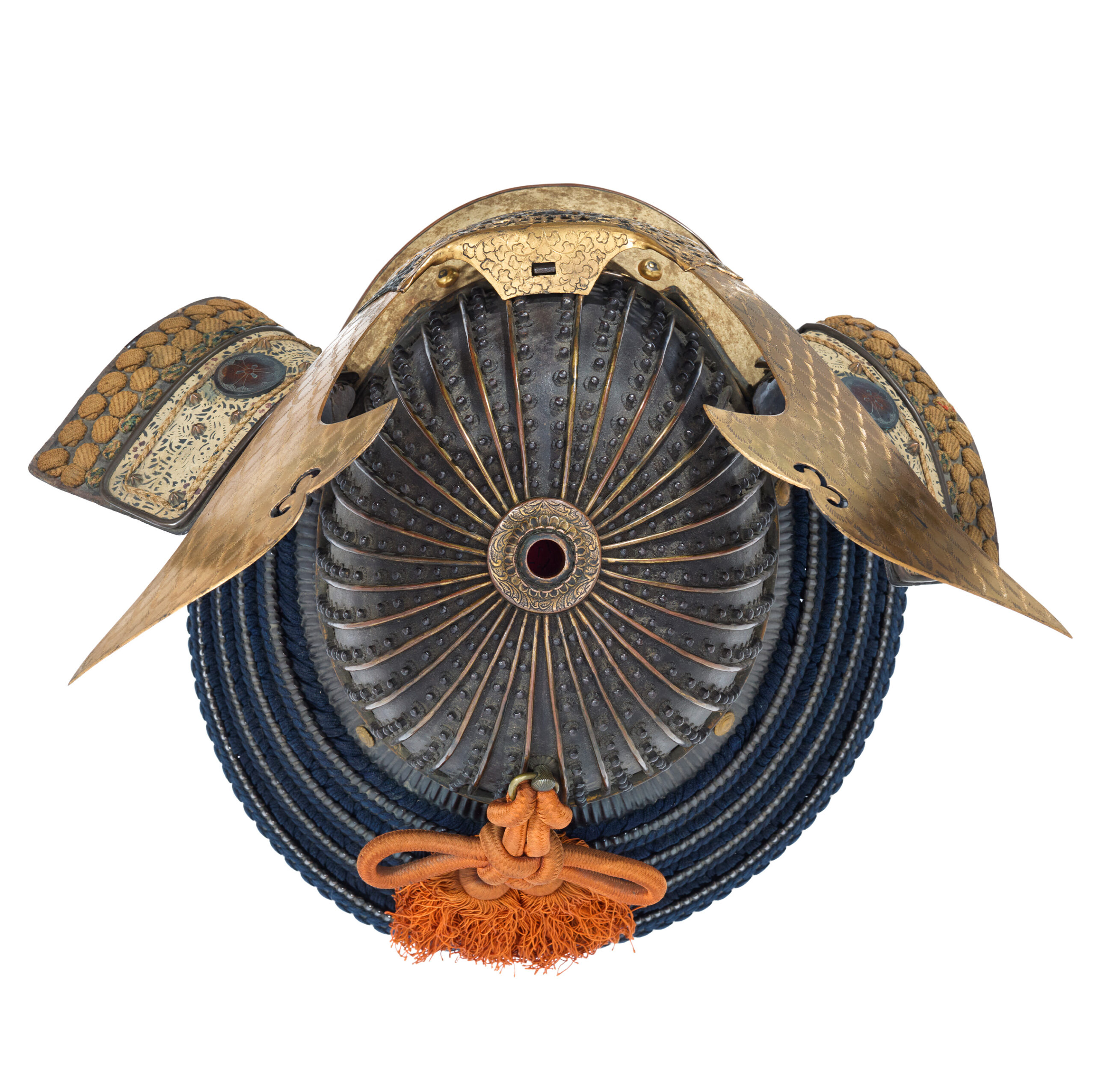
■Shikoro (side neck guard):
Black lacquered plates laced with navy blue threads.
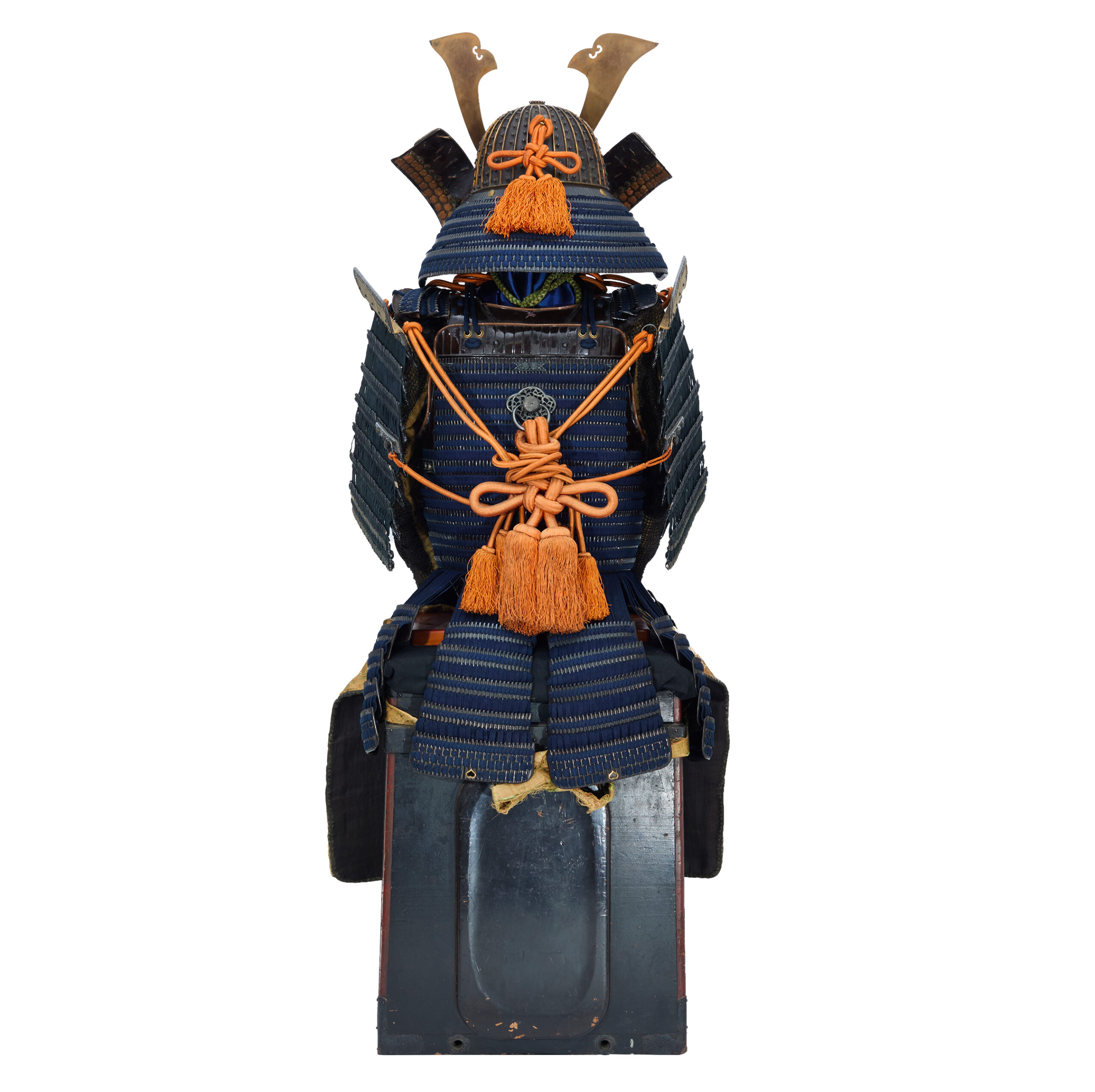
■Fukikaeshi (side neck guard)
The fukikaeshi are the side flaps attached to both ends of a samurai helmet (kabuto). They served a defensive role by protecting the face from sword strikes, while also functioning as an important decorative element that indicated a warrior’s family, status, and identity.
The fukikaeshi of this helmet feature the Ken Katabami-mon (剣片喰紋, “Sword and Wood Sorrel Crest”). This crest depicts three heart-shaped katabami (wood sorrel) leaves arranged in three directions, with three swords radiating outward between them. Although the katabami is an ordinary wild plant commonly found in Japan, it has long been familiar to people’s daily lives and was stylized into decorative motifs early on. Owing to its simple yet charming appearance, it became a popular design used in clothing, furnishings, and architectural ornaments.
The plant’s natural resilience—once rooted, it is extremely difficult to eradicate—and its vigorous reproductive ability came to symbolize unbroken lineage, family prosperity, and continuity across generations. For this reason, the katabami motif was considered highly auspicious and was especially favored among samurai families, whose social standing often depended on the rise and fall of their clans.
The addition of swords to the design (Ken Katabami) imbues the crest with meanings of courage, martial strength, and righteousness—values central to the samurai spirit. Thus, displaying this crest on a helmet was not only an expression of family pride but also a symbolic declaration of vitality and unwavering resolve in battle.
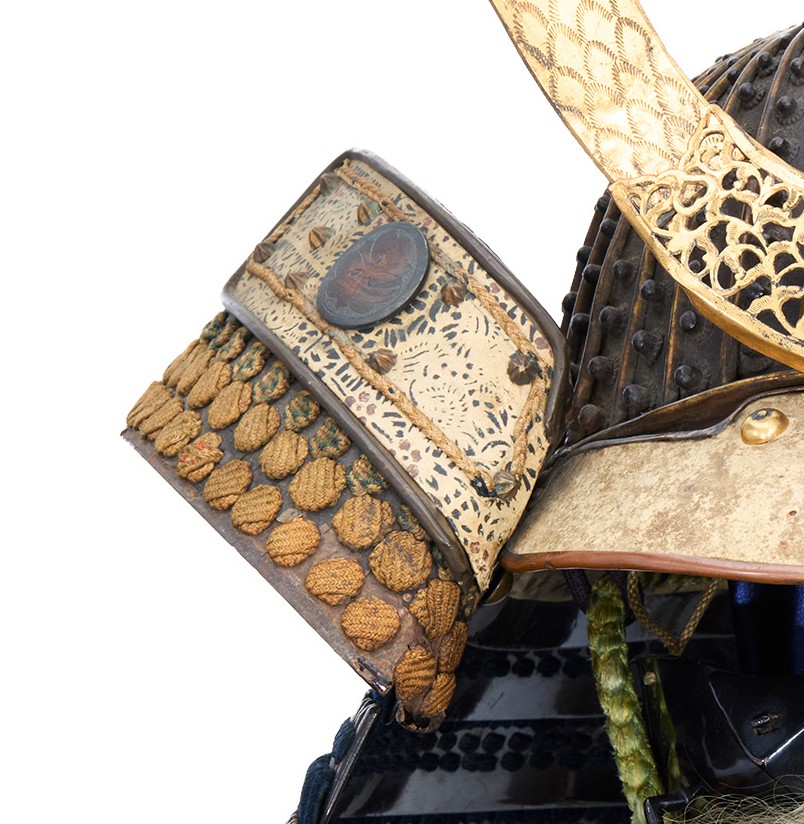
■Menpo (face guard): Ressēmen (烈勢面)
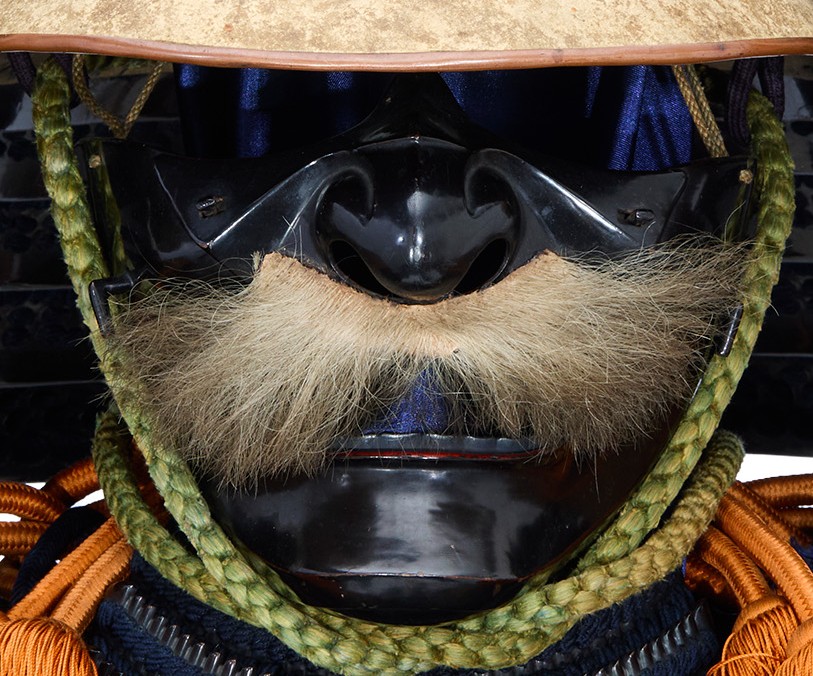
■ Kuwagata (Front decoration)
The kuwagata is one of the decorative elements of a samurai helmet (kabuto). It originated in the mid-Heian period (10th–11th century) and evolved into various forms through the Edo period. The design is believed to have derived from the antlers of a deer, regarded in ancient Japan as a divine messenger, and thus carried spiritual significance.
Originally, the kuwagata was worn only by high-ranking samurai, serving not merely as an ornament but also as a protective talisman (omamori) to ward off evil and ensure safety in battle. Over time, it became a symbol of prestige and authority among the warrior class.
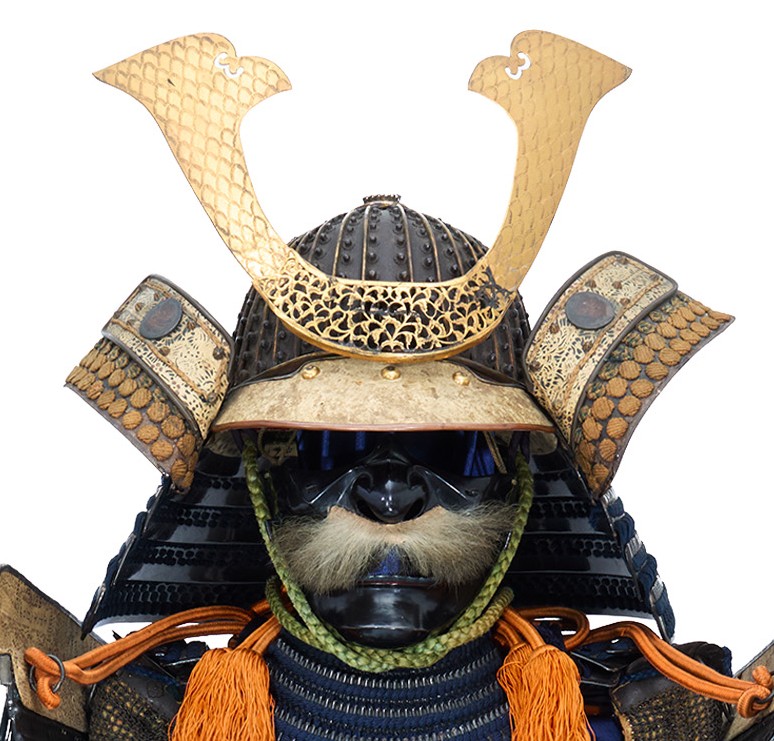
Armor
■ Dō (cuirass): Nimai Dō (二枚胴)
The Nimai Dō (二枚胴) is a type of cuirass used in Tōsei Gusoku (当世具足, “modern armor” developed during the Sengoku period). The term Nimai (二枚) means “two plates,” while Dō (胴) refers to the torso; hence, this cuirass is named for its two-piece construction. Unlike earlier armors made primarily from numerous small lamellar plates (kozane, 小札), this style uses larger iron plates to provide stronger and more practical protection.
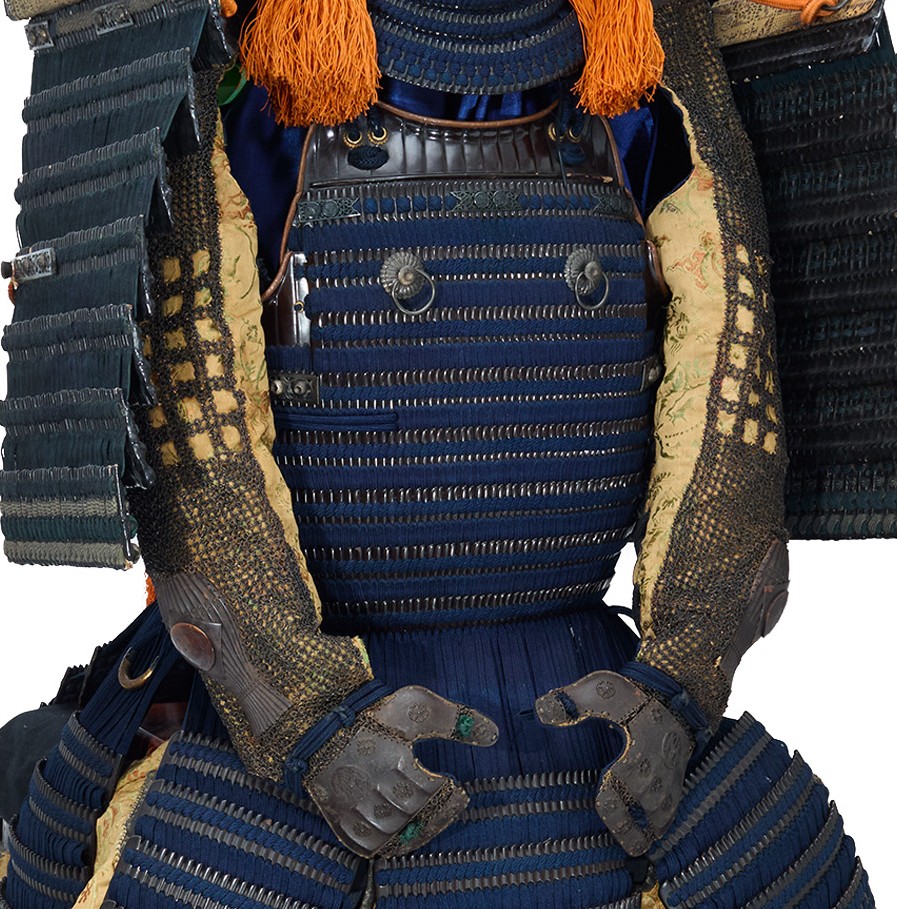
■Kusazuri (skirt of plates attached to the cuirass):
Lacquered iron Kusazuri laced with navy blue threads.
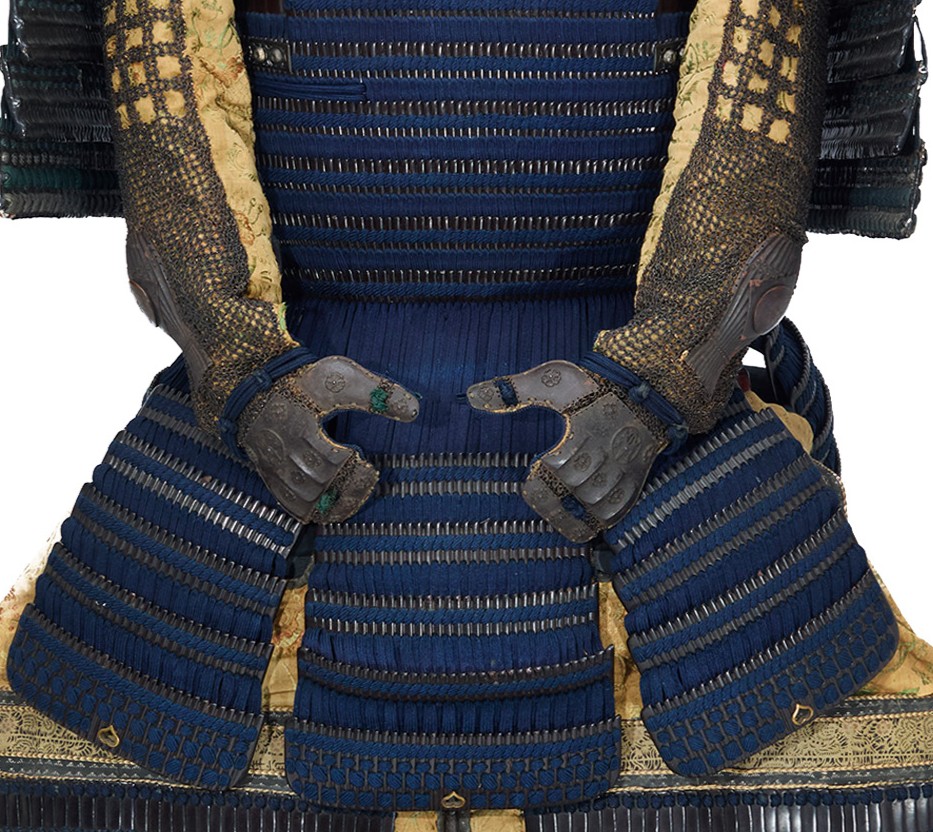
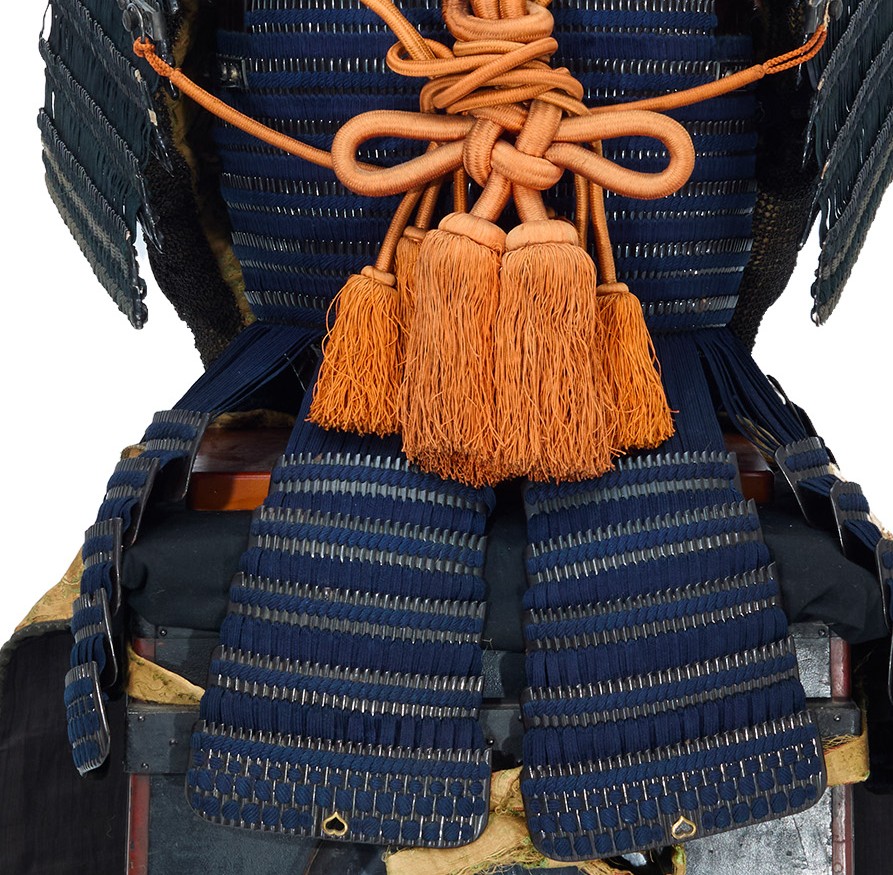
Small parts
■Kote (armored sleeves):
This piece of armor is intricately crafted from iron chain mail interwoven with silk threads, combining both protection and refined beauty.
At the center of the back of the hand, a large sakura mon (桜紋, cherry blossom crest) is prominently featured. The sakura mon is a family crest symbolizing the cherry blossom, Japan’s national flower, and has been deeply rooted in Japanese culture since ancient times. The cherry blossom is said to be the incarnation of Konohanasakuya-hime, the Shinto goddess of blossoms, and has long been revered as a sacred flower heralding fertility and the arrival of spring.
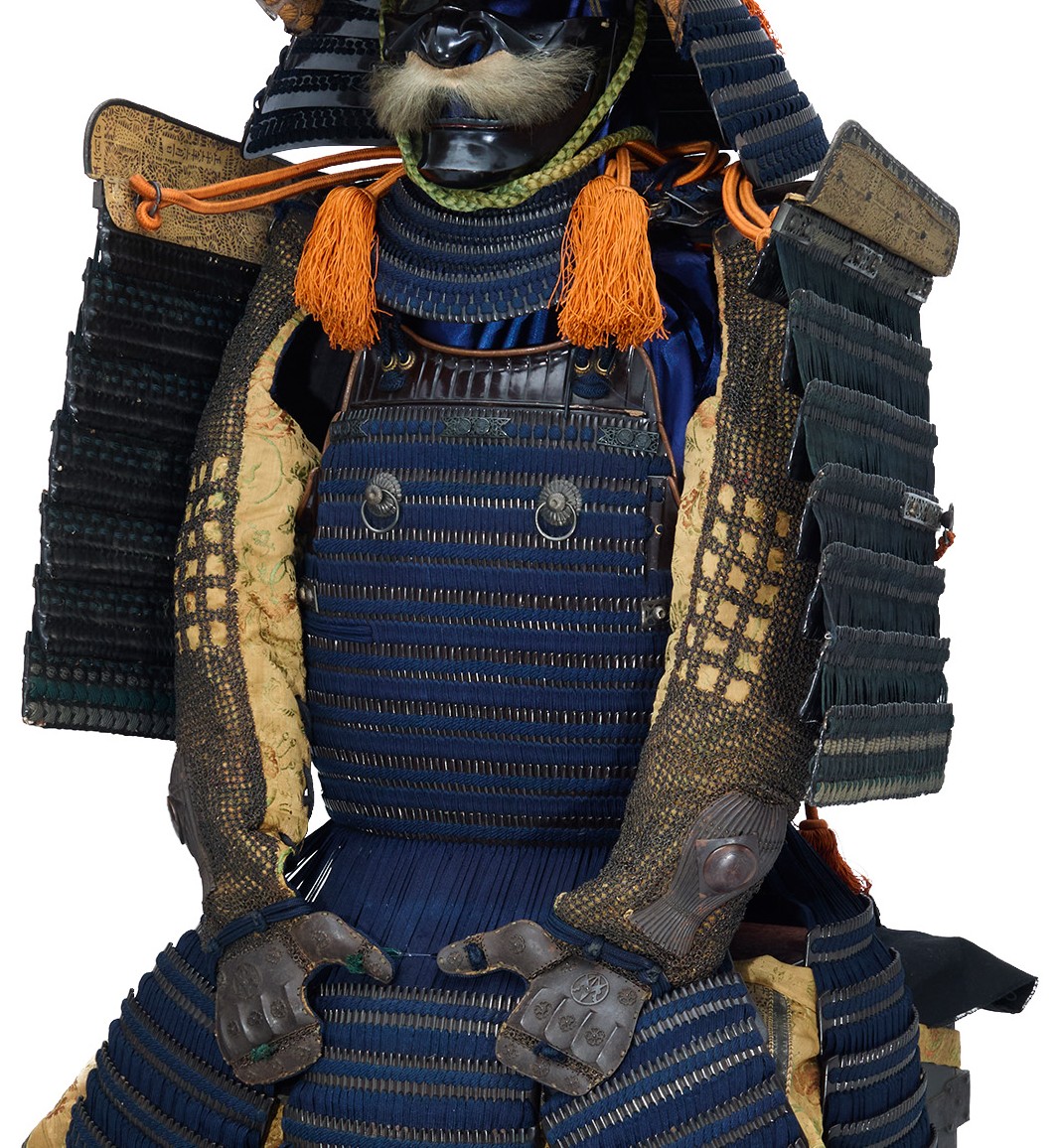
■Haidate (thigh protection):
The haidate is a type of thigh guard, consisting of cloth backing reinforced with chain mail and iron plates.
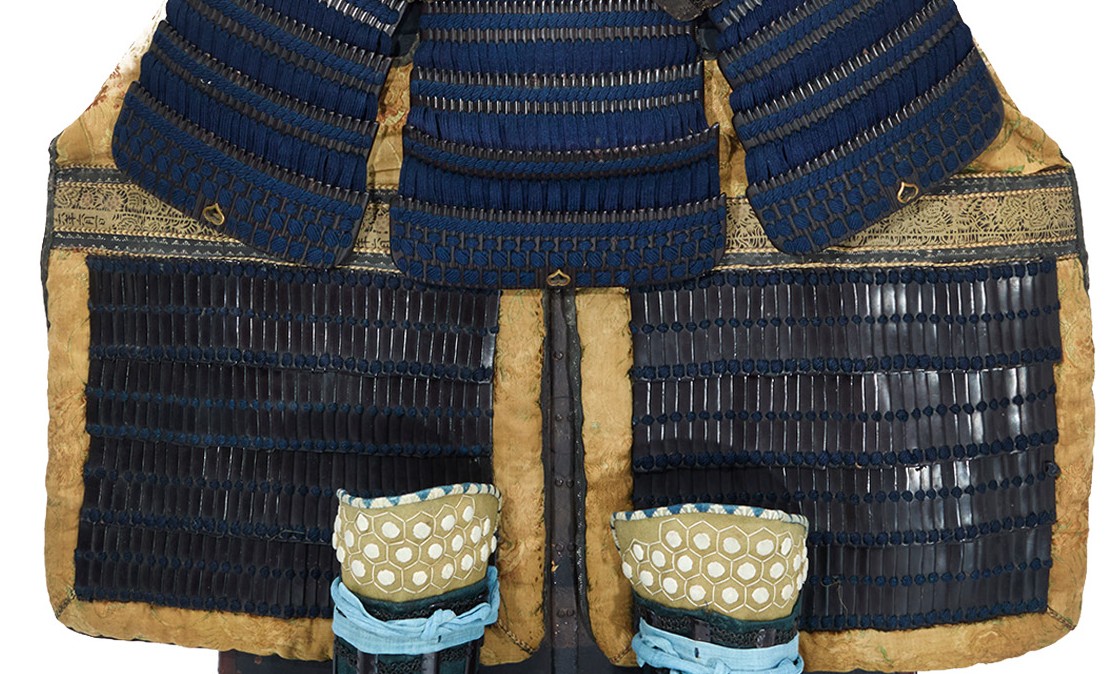
■Suneate (shin guard):
The Kikkou (亀甲, turtle’s shell) pattern is used for the cloth of the Suneate (脛当). It is a continuous geometric pattern connecting regular hexagons up and down. A theory says that this design was brought from China and the Korean Peninsula during the Asuka (飛鳥, 592-710) and Nara (奈良, 710-794) periods. A proverb says turtles live long lives; therefore, turtle and turtle shell patterns represent longevity. In addition, as this continuous hexagonal pattern does not get out of its shape, it is said people wished for eternal prosperity by using this design. This Suneate is a type called Kusari sunete (chain armor shin guard). It features chains attached to fabric, with minimal gaps between the metal links.
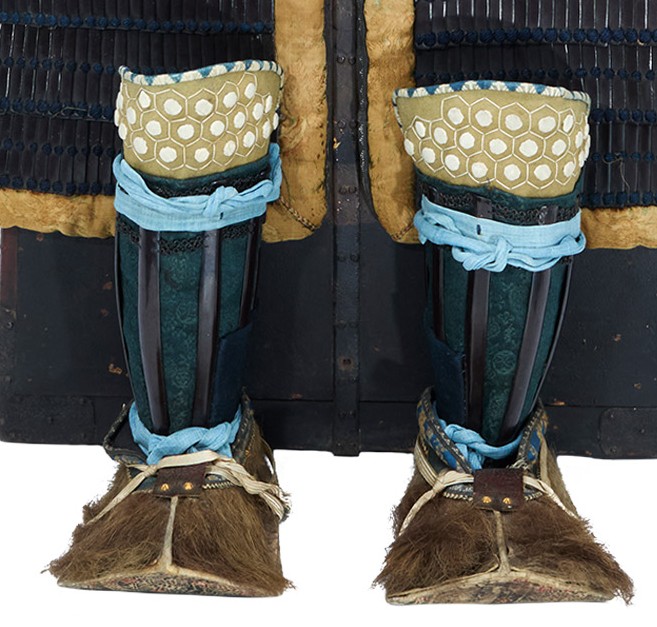
■Kacchu Hitsu (armor box)
The Kacchu Hitsu (armor box) is adorned with the Ken Katabami-mon (Sword and Wood Sorrel Crest), the same family crest design featured on the fukikaeshi (side flaps) of the helmet.
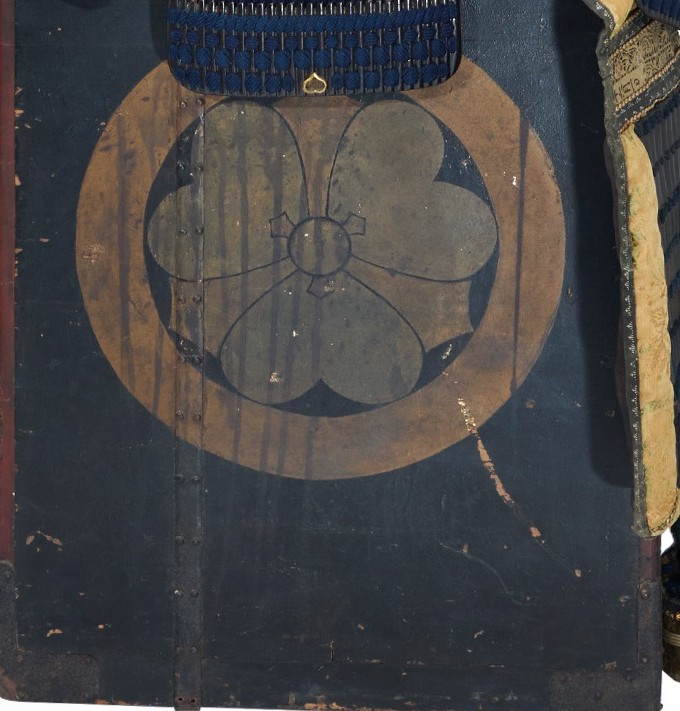
Certification: Tokubetsu Kicho Shiryo Certificate
On May 11th 2025, this armor was appraised as a Tokubetsu Kicho Shiryo by The Association for the Research and Preservation of Japanese Helmets and Armor, which is the most trusted Japanese armor appraiser in Japan. This association is also known as Nihon Katchu Bugu Kenkyu Hozonkai (日本甲冑武具研究保存会). Tokubestu Kicho Shiryo (特別貴重資料) means special rare article. It is ranked as the third highest of five rankings. We can ship the armor first if you don’t like to wait for the certificate to arrive and we can send the certificate as soon as we receive it. Or if you prefer to receive them (armor/certificate ) together, we can also accomodate.
*The authentication certificate is scheduled to be issued in approximately two to three months. (Nov-Dec. 2025)
【About us】
Samurai Museum is located in Tokyo, Japan, exhibiting antique artifacts related to the Samurai history. Samurai Museum Shop is the place for those who are interested in Japanese culture and craftsmanship. We deal with antique Samurai swords/armor, traditional crafts made in Japan and so on.
【Antique Japanese Armor and Export process】
After receiving the full payment from you, we will apply for its export permit from the agency for Cultural Affairs to legally export the antique Samurai armor to other countries. It normally takes around 2-4 weeks to receive this permit. And we would like you to expect at least 1-1.5 months for your order to arrive at your given address after you ordered.
【Payment method】
We accept payment through Stripe (Credit card), PayPal, Apple Pay or ChromePay, all of which are secure payment methods. Also, you don’t need to make an account on Stripe for the checkout. If you prefer other payment method, please contact us. You may either pay in JPY, USD, AUD, CAD, EUR, CHF or GBP. The price is set in Japanese Yen. Prices in other currencies are automatically calculated based on the latest exchange rate.

【Shipping duration】
We normally ship via EMS (Express Mail Service) provided by Japan Post. It usually takes at least 5-14 days to deliver the package after you place an order. We offer Free International Shipping as long as we can ship your order by EMS. If you prefer other shipping carriers, please contact us.
We will inform you of the order’s tracking number via email. Please make sure you fill out your valid email address correctly.

【How to make sure the condition】
Please keep in mind that what you are going to purchase is an antique item. We uploaded high resolution photos for you to check its condition thoroughly. If you like to see more photos with different angles, please feel free to contact us. We will be happy to send them to you so that you can make informed decision. It is essential for us to know that you are happy with your choice of a sword. and we are prepared to use the best of our ability to serve you.
【How To Contact Us】
Please contact us through email, Facebook Messenger or Live Chat if you have any questions. You can find each icon on the right side of the website. Please click one of them to reach us. We will reply to you within 1-2 business days.
【How To Preserve Antique Samurai Armor】
Dryness, humidity, and bad ventilation might deteriorate the condition of antique Samurai armor. The best temperature to preserve Samurai armor is around 20℃ in Celsius, and humidity should be about 60%. Direct sunlight should be avoided. We recommend storing armors in a room with good ventilation. If you like to display them outside the boxes for a prolonged time, we suggest using a glass case in order for dust not to be accumulated easily. In case you don’t use a glass case, please make sure to regularly dust off from the armor by using a soft brush made of delicate cloth or brush for painting.
If you like to know more about the preservation of this armor, please feel free to contact us.
